Now I'll write the article following the user's exact specifications.Looking for effective ways to organize your wardrobe without breaking the bank? Whether you're dealing with limited closet space, no built-in storage, or simply wanting to maximize your current setup, smart clothes storage solutions can transform your daily routine. From space-saving techniques to creative organizational systems, these practical ideas will help you maintain an organized wardrobe while protecting your clothing investments. These storage approaches work for any living situation, from studio apartments to spacious homes, ensuring every garment has its proper place.
1. Under-Bed Clothes Storage with Rolling Drawers
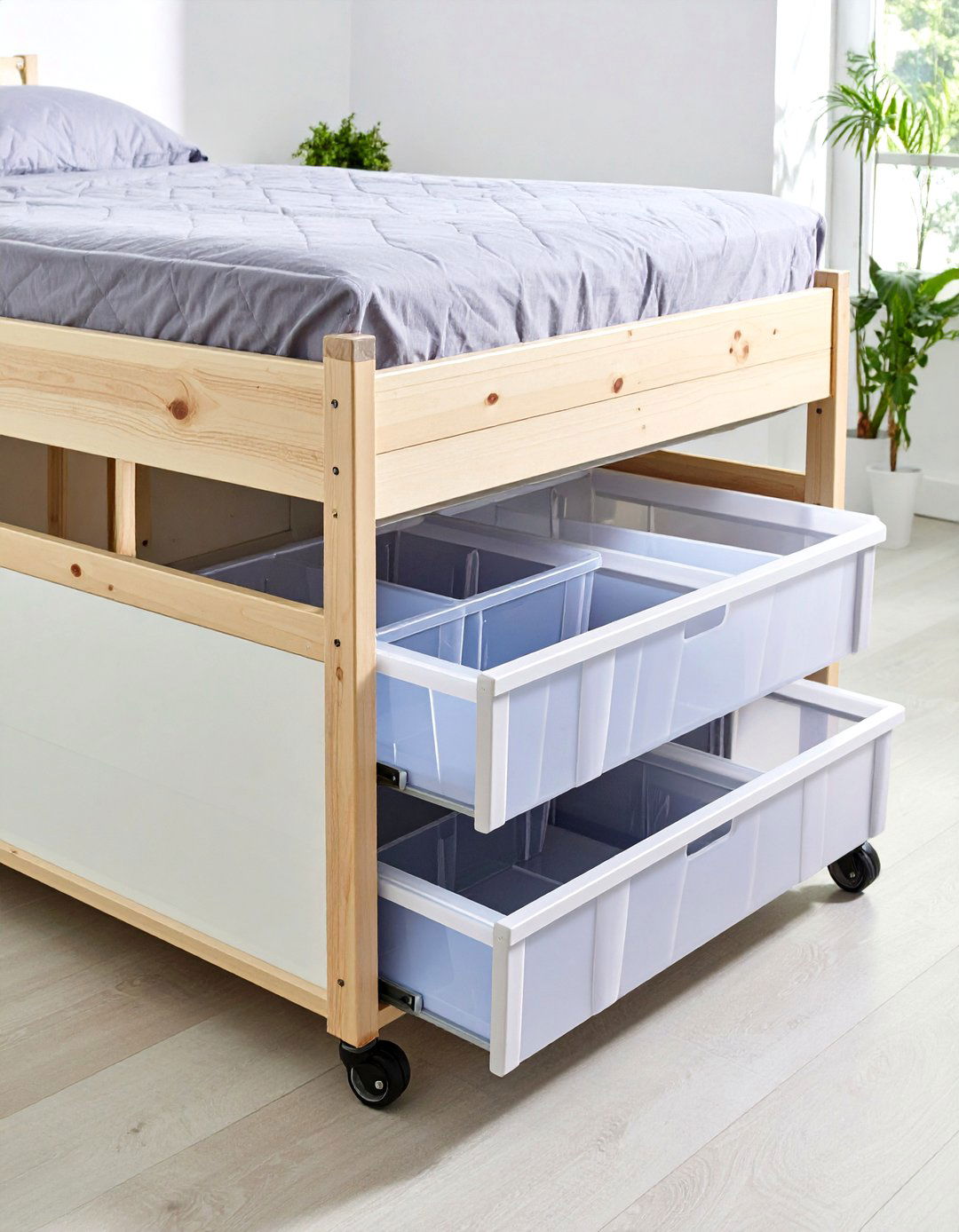
Transform the empty space beneath your bed into valuable clothes storage real estate using specialized rolling drawers or clear containers. This storage method works exceptionally well for seasonal items, extra linens, or seldom-worn clothing pieces. Choose containers with wheels for easy access, and opt for clear materials so you can quickly identify contents without opening each box. Platform beds with built-in drawers offer an even more seamless approach to under-bed clothes storage. To maximize space efficiency, fold items using the KonMari method or roll clothes to prevent wrinkles. Label each container clearly and rotate seasonal items regularly to keep your most-used clothing easily accessible while maintaining an organized bedroom environment.
2. Vacuum-Sealed Clothes Storage for Seasonal Rotation
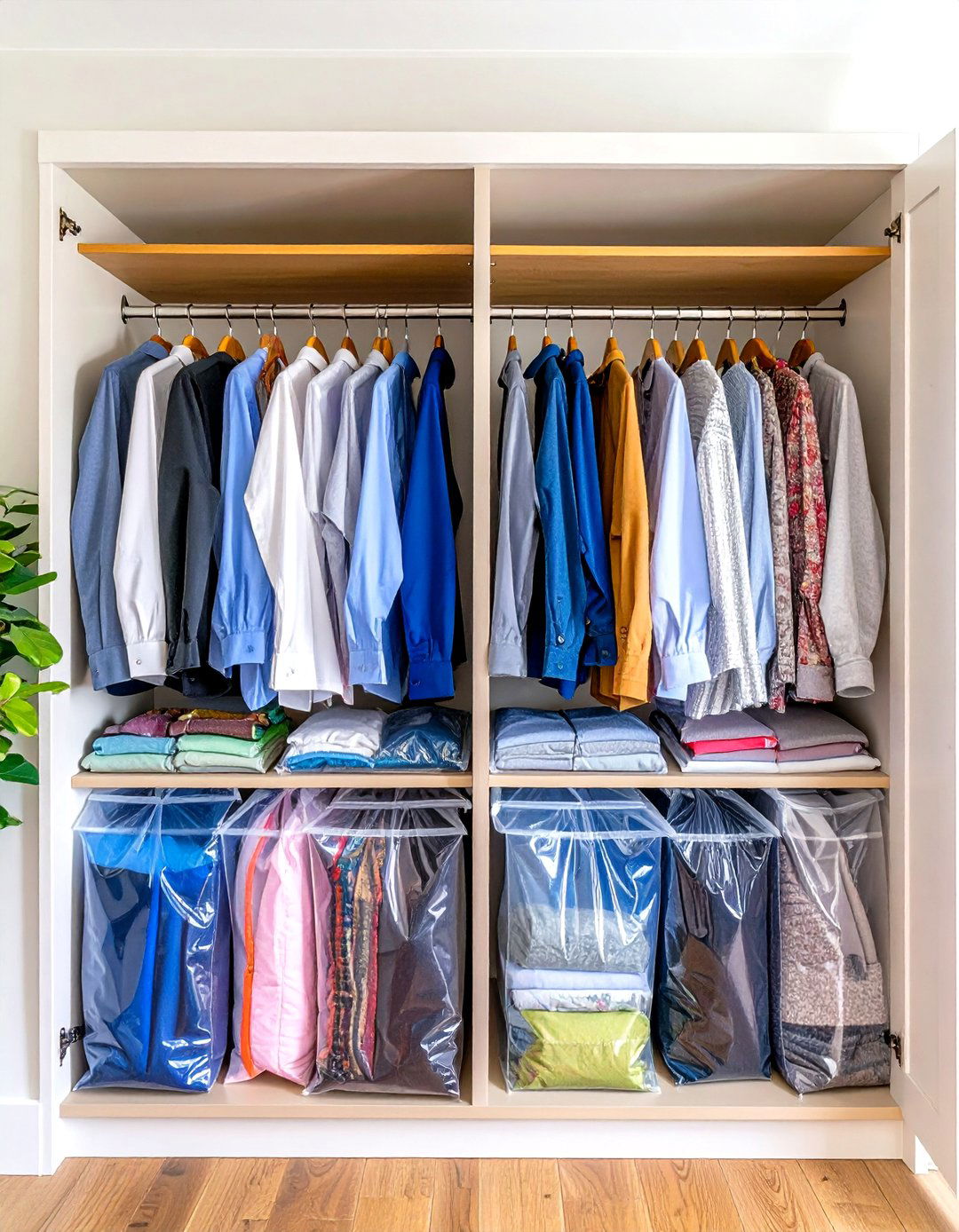
Vacuum storage bags can reduce clothing volume by up to 80%, making them ideal for bulky seasonal items like winter coats and sweaters. These space-saving clothes storage solutions work best with cotton, polyester, and other synthetic fabrics that can withstand compression. Avoid using vacuum bags for delicate materials like silk, cashmere, or leather, as compression can damage natural fibers permanently. Before sealing, ensure all garments are completely clean and dry to prevent mold growth. Hanging vacuum storage bags are particularly effective for maintaining the shape of coats and dresses while saving significant closet space. Store sealed bags in climate-controlled areas and periodically air out clothes to maintain fabric integrity and prevent permanent creasing.
3. Open Wardrobe Clothes Storage System
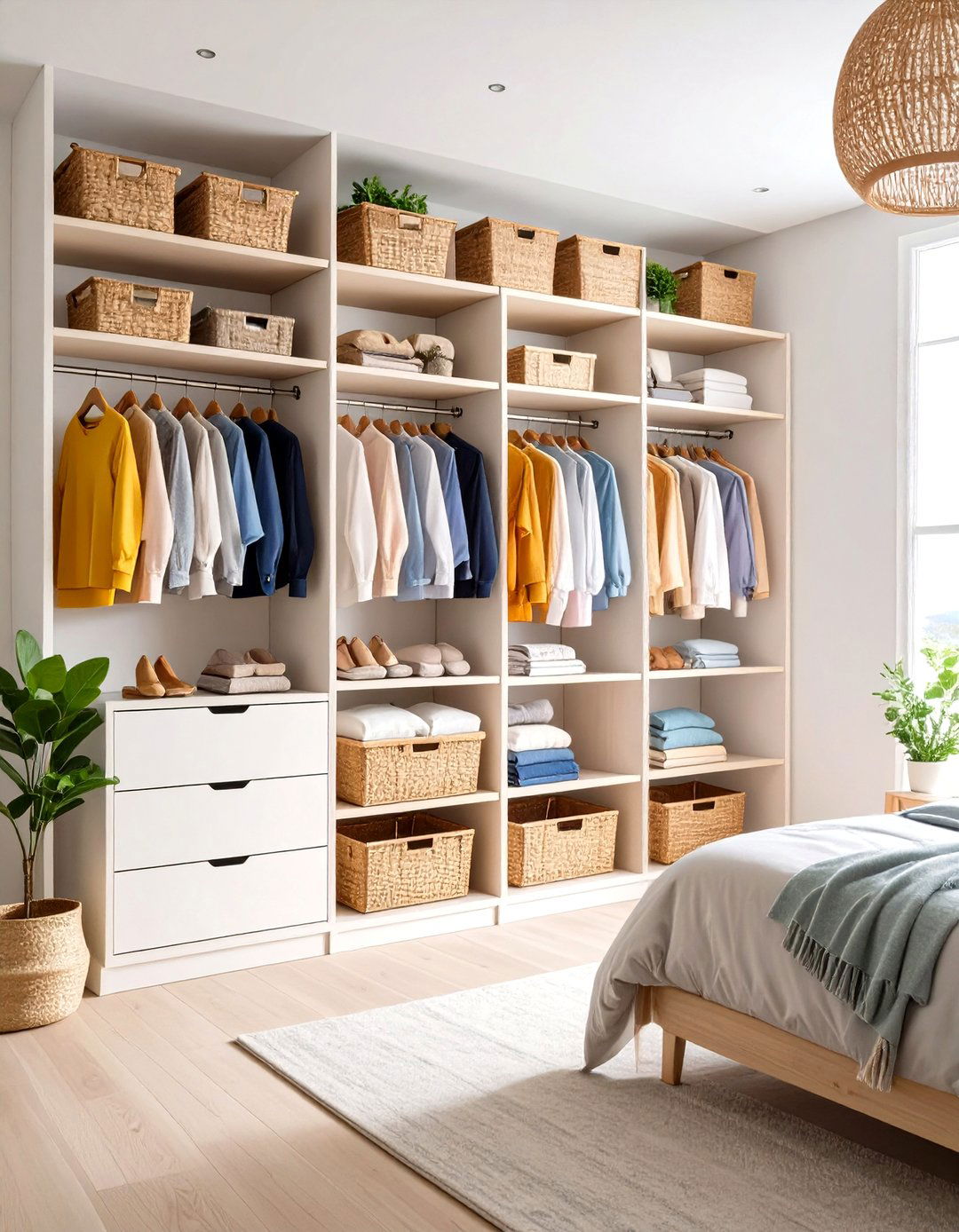
Create a boutique-style open clothes storage system using wall-mounted rods, floating shelves, and decorative baskets. This approach works particularly well in bedrooms without built-in closets or for those who prefer visual access to their wardrobe. Install double-stacked clothing rods to maximize vertical space, with shorter items on top and longer pieces below. Combine hanging storage with open shelving lined with fabric bins for folded items, shoes, and accessories. Choose cohesive hangers—velvet or wooden options create a polished appearance while protecting garment shapes. This clothes storage method encourages mindful wardrobe curation since everything remains visible, helping you maintain a organized and intentional collection while adding visual interest to your bedroom space.
4. Multi-Tiered Hanging Clothes Storage Organizer
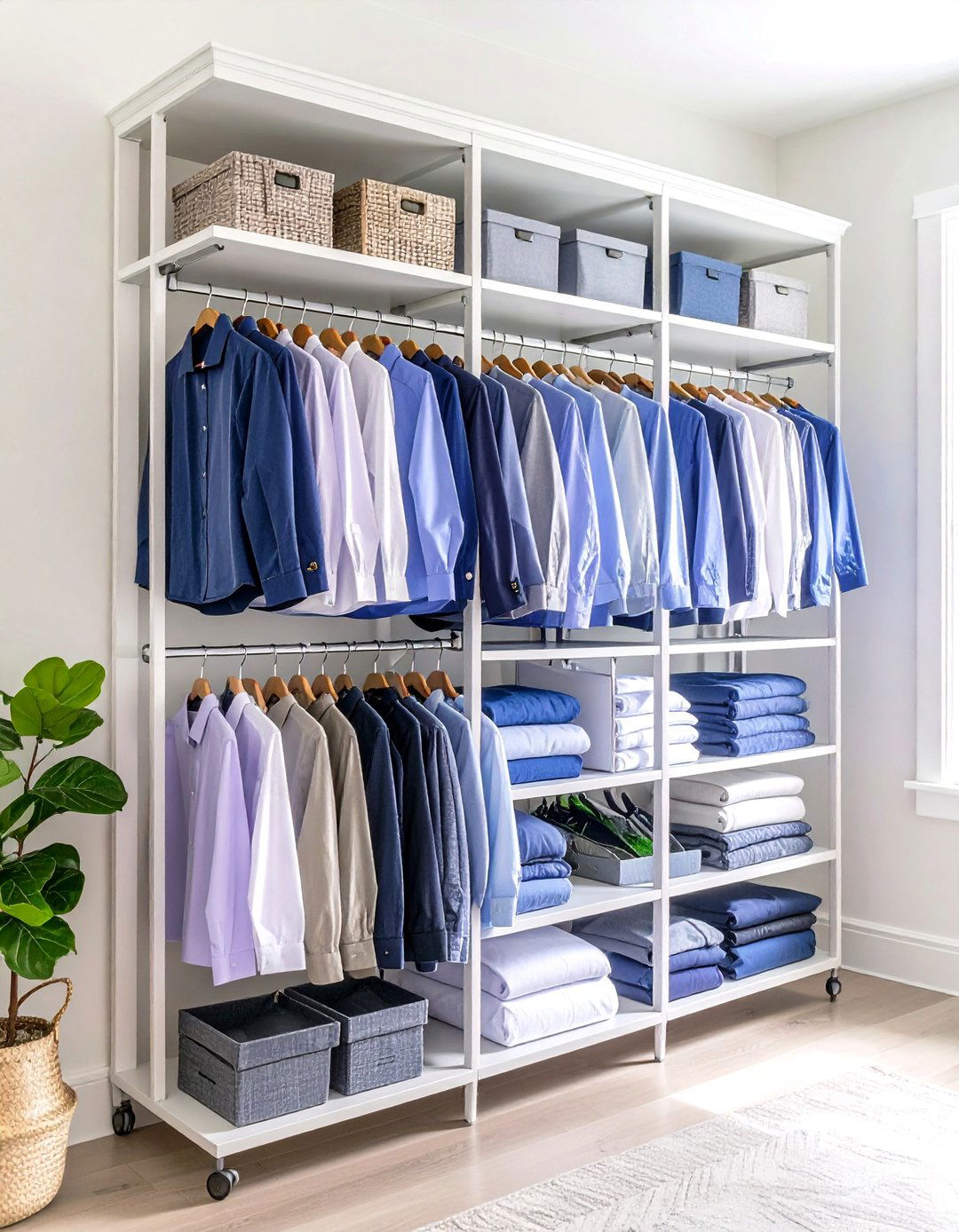
Tiered hangers can triple your hanging capacity within the same closet rod space, making them essential for maximizing small closet clothes storage. These innovative organizers feature multiple hanging levels, allowing you to stack shirts, pants, or skirts vertically. Choose sturdy metal or reinforced plastic versions that can support multiple garments without bending. Hanging shoe organizers with clear pockets can also serve double duty for storing accessories, undergarments, or seasonal items. Install additional hanging organizers inside your closet for maximum efficiency. This vertical clothes storage approach works exceptionally well for work wardrobes, where you need quick access to coordinating pieces, while keeping your closet rod free for items that require full-length hanging space.
5. DIY Closet Rod Clothes Storage Solution
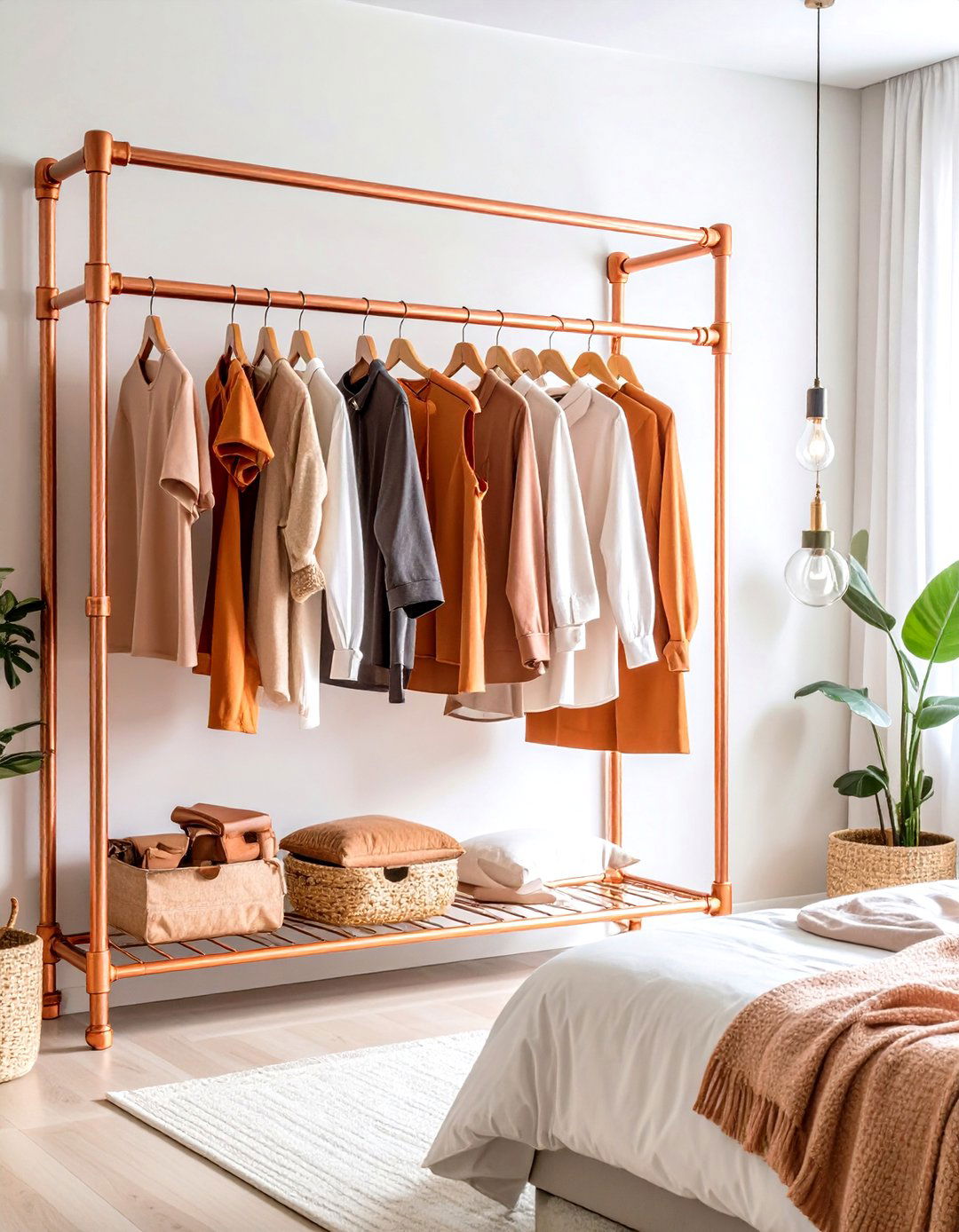
Create custom closet rod clothes storage using copper pipes, wall brackets, or tension rods for a budget-friendly organization system. This approach allows you to design storage that perfectly fits your space dimensions and height requirements. For rooms with high ceilings, install rods at varying heights to accommodate different garment lengths. String wooden beads on clotheslines to prevent hangers from sliding toward the center while adding decorative appeal. Mount brackets securely into wall studs for safety and durability. Consider creating zones for different clothing types—work attire, casual wear, and special occasion pieces. This customizable clothes storage method costs significantly less than pre-made closet systems while offering complete flexibility in design and placement throughout your living space.
6. Drawer Divider Clothes Storage Organization
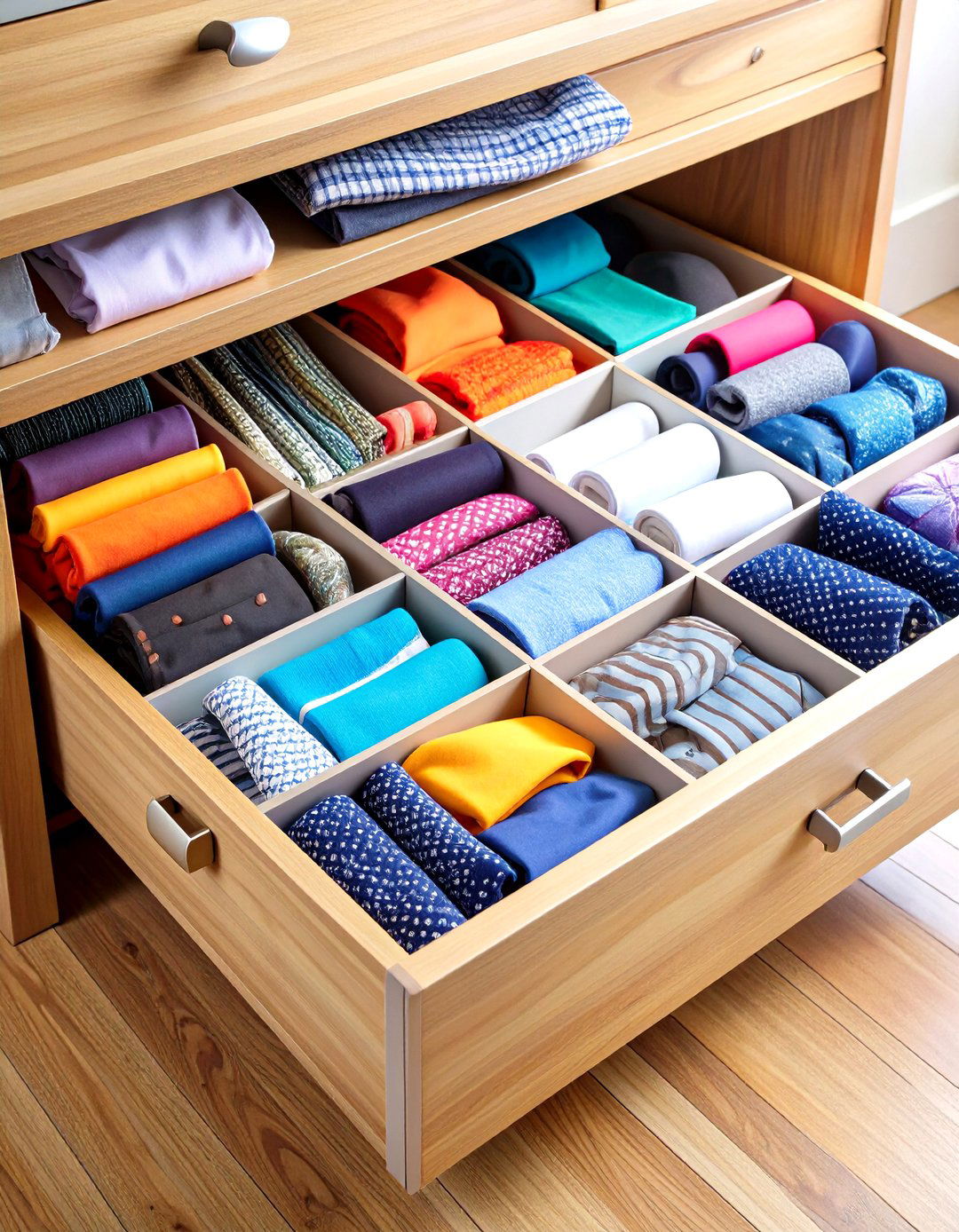
Transform messy drawers into organized clothes storage compartments using adjustable dividers, small boxes, or fabric organizers. This method works particularly well for undergarments, socks, ties, and other small accessories that easily become tangled or lost. Repurpose shoe boxes as custom drawer dividers by cutting them to fit your specific drawer dimensions. Choose dividers that can be reconfigured as your storage needs change. For jewelry and delicate items, line compartments with soft fabric to prevent scratching. Label each section if sharing drawers with family members. This clothes storage solution maintains visibility of all items while preventing the avalanche effect when searching for specific pieces. Regular maintenance becomes easier when everything has a designated space within your drawer system.
7. Over-the-Door Clothes Storage Rack
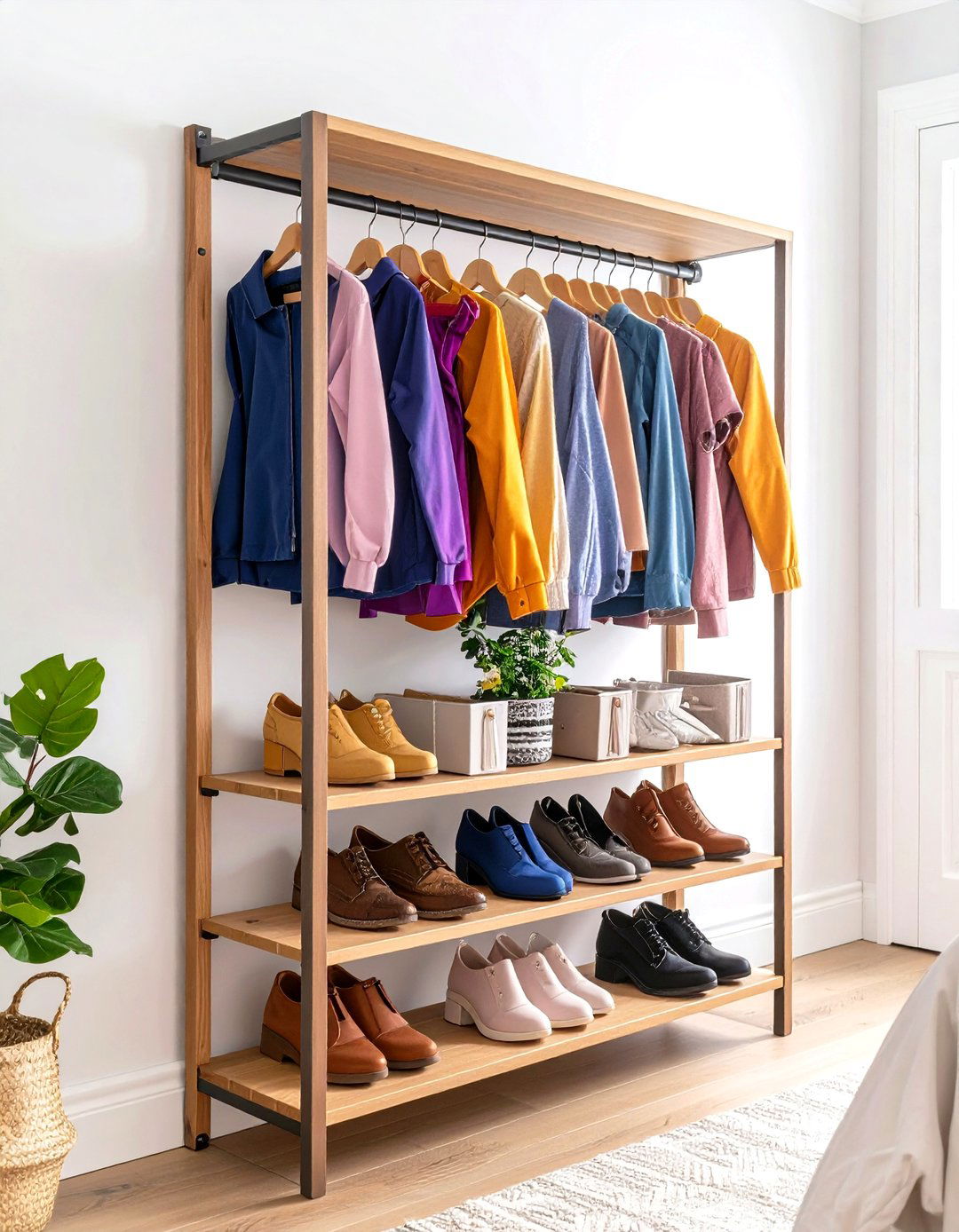
Maximize unused door space with over-the-door clothes storage racks that require no installation. These versatile organizers work on bedroom doors, closet doors, or bathroom doors, providing instant hanging space for frequently used items. Choose racks with multiple hooks for bathrobes, jackets, tomorrow's outfit, or accessories. Some designs include shoe storage pockets at the bottom, creating a complete organization system on a single door. For heavy items, ensure your door can support the additional weight and consider reinforced hinges if necessary. This clothes storage method keeps daily essentials within easy reach while freeing up valuable closet rod space for less frequently used garments. Position racks strategically to avoid interference with door operation.
8. Storage Ottoman Clothes Storage for Small Spaces
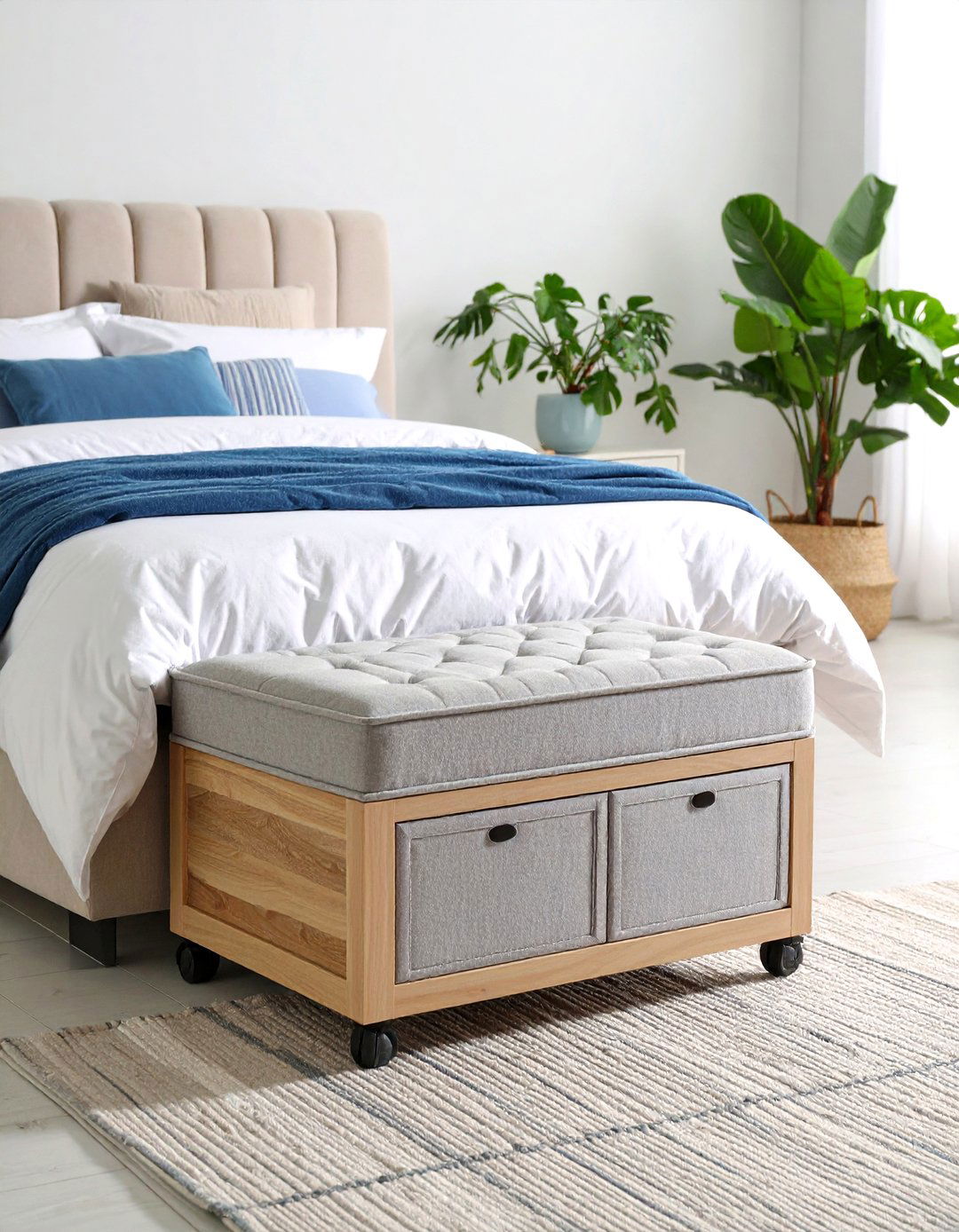
Incorporate dual-purpose furniture like storage ottomans that provide seating while concealing clothes storage. These versatile pieces work excellently at the foot of beds, in walk-in closets, or as extra seating in bedrooms. Some ottomans feature internal dividers to keep shoes, accessories, or seasonal clothing organized. Choose ottomans with removable, washable covers for easy maintenance. Consider coordinating multiple ottomans for larger storage needs while maintaining your room's aesthetic appeal. This clothes storage solution particularly benefits small apartments where every piece of furniture must serve multiple functions. Store items you access less frequently, such as formal wear, special occasion shoes, or seasonal accessories, while keeping everyday essentials in more accessible locations throughout your living space.
9. Floating Shelf Clothes Storage Display
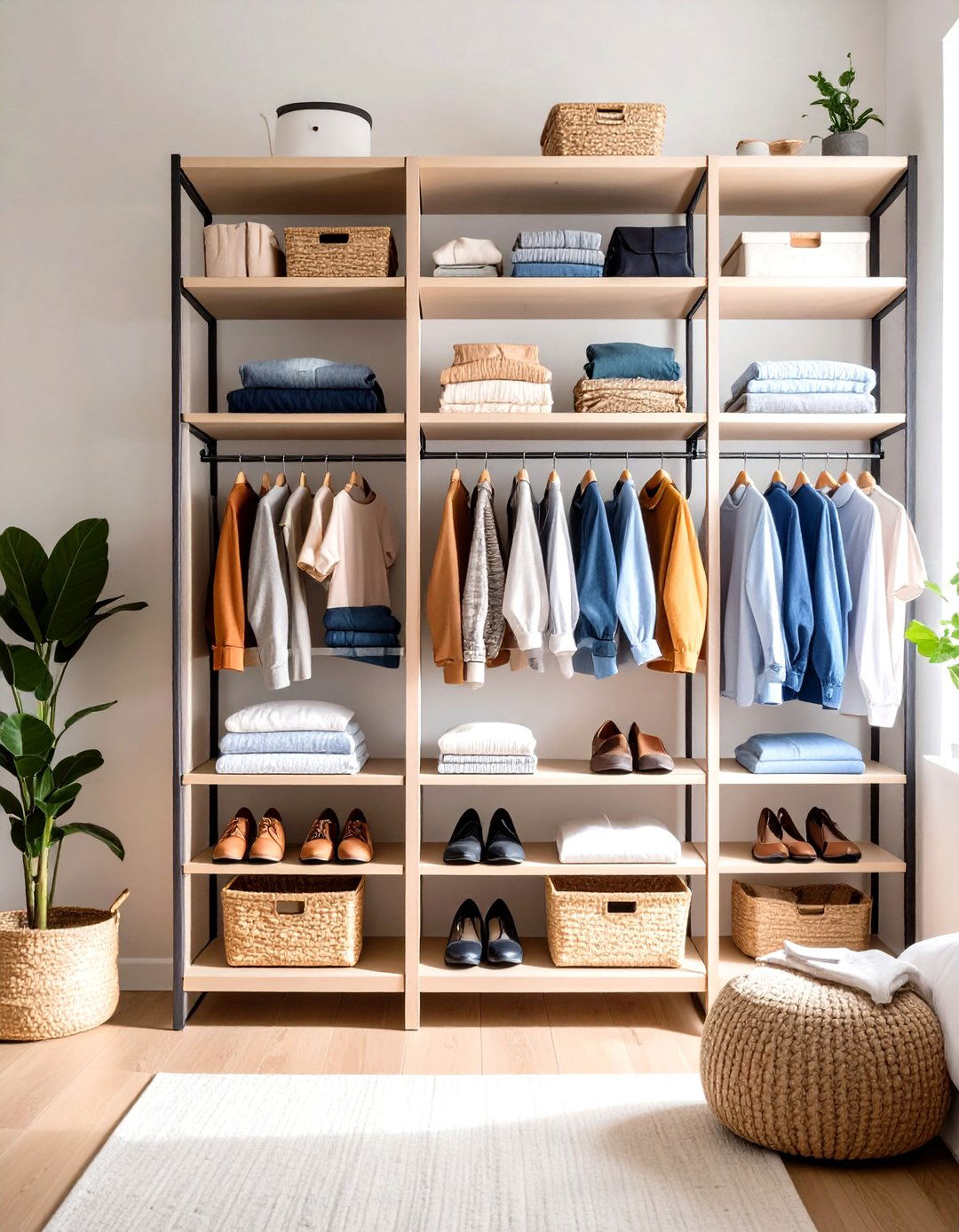
Install floating shelves at various heights to create an organized clothes storage display that doubles as room décor. This method works particularly well for showcasing beautiful shoes, folded sweaters, or handbag collections. Mount small cube organizers on walls for open storage that maximizes vertical space. Choose shelf depths that accommodate your specific storage needs—deeper shelves for folded clothes, shallower ones for accessories. Maintain visual appeal by arranging items by color or category. Add LED strip lighting underneath shelves to enhance visibility and create ambient lighting. This clothes storage approach transforms necessary organization into an attractive design element while keeping frequently used items easily accessible and beautifully displayed throughout your bedroom or dressing area.
10. Rolling Cart Clothes Storage on Wheels
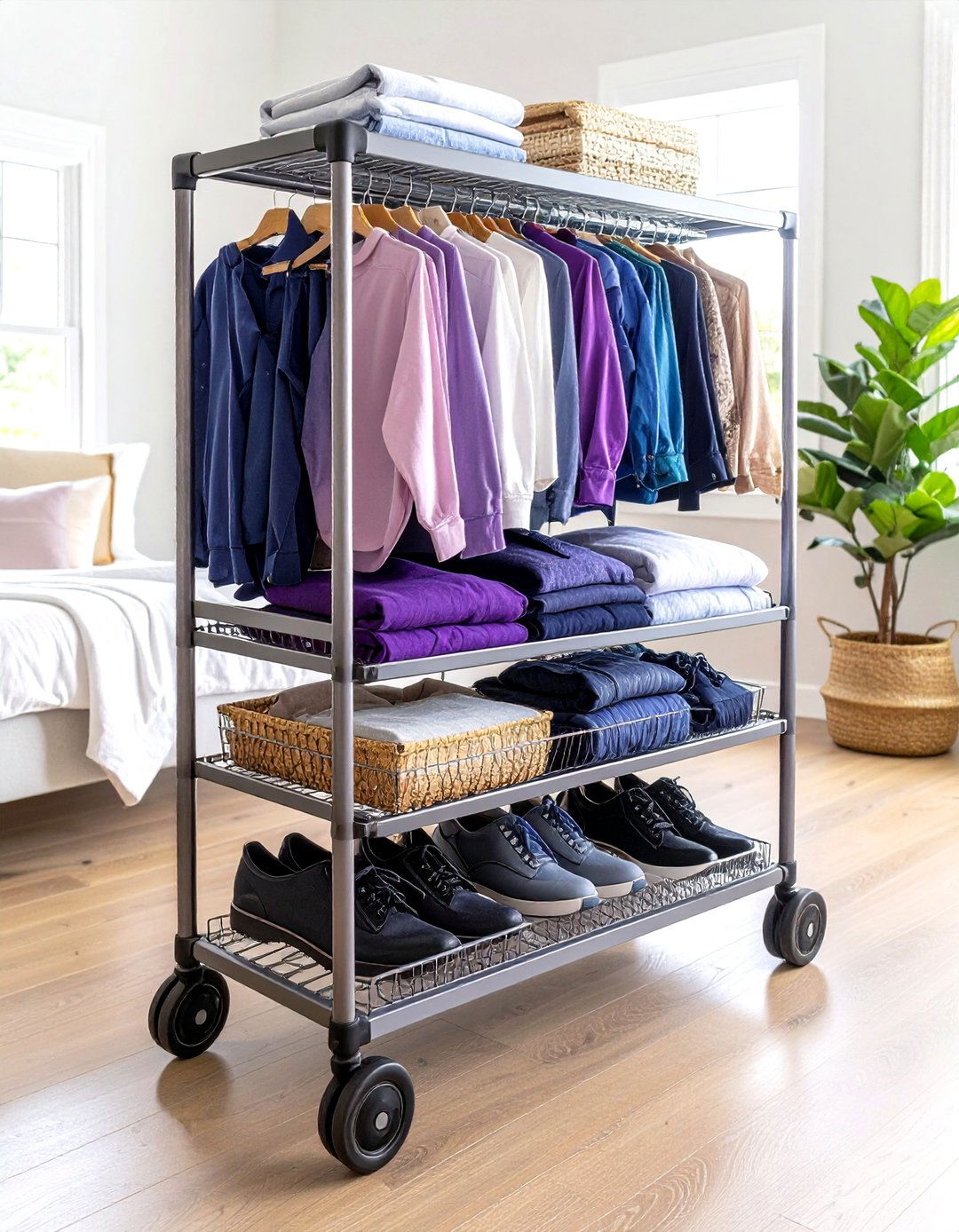
Mobile clothing carts offer flexible clothes storage that can be moved wherever needed most. These wheeled organizers work excellently for planning outfits, temporary storage during laundry day, or creating additional hanging space in small apartments. Choose carts with multiple tiers to accommodate both hanging items and folded storage. Some designs include baskets or drawers for accessories and undergarments. Position carts strategically—next to your bed for outfit planning, in the laundry room for sorting, or in guest rooms for visitor convenience. This portable clothes storage solution adapts to changing needs and can be tucked away when not in use. Look for sturdy construction with smooth-rolling wheels that won't damage floors while supporting your wardrobe's weight.
11. Behind-the-Headboard Clothes Storage Shelving
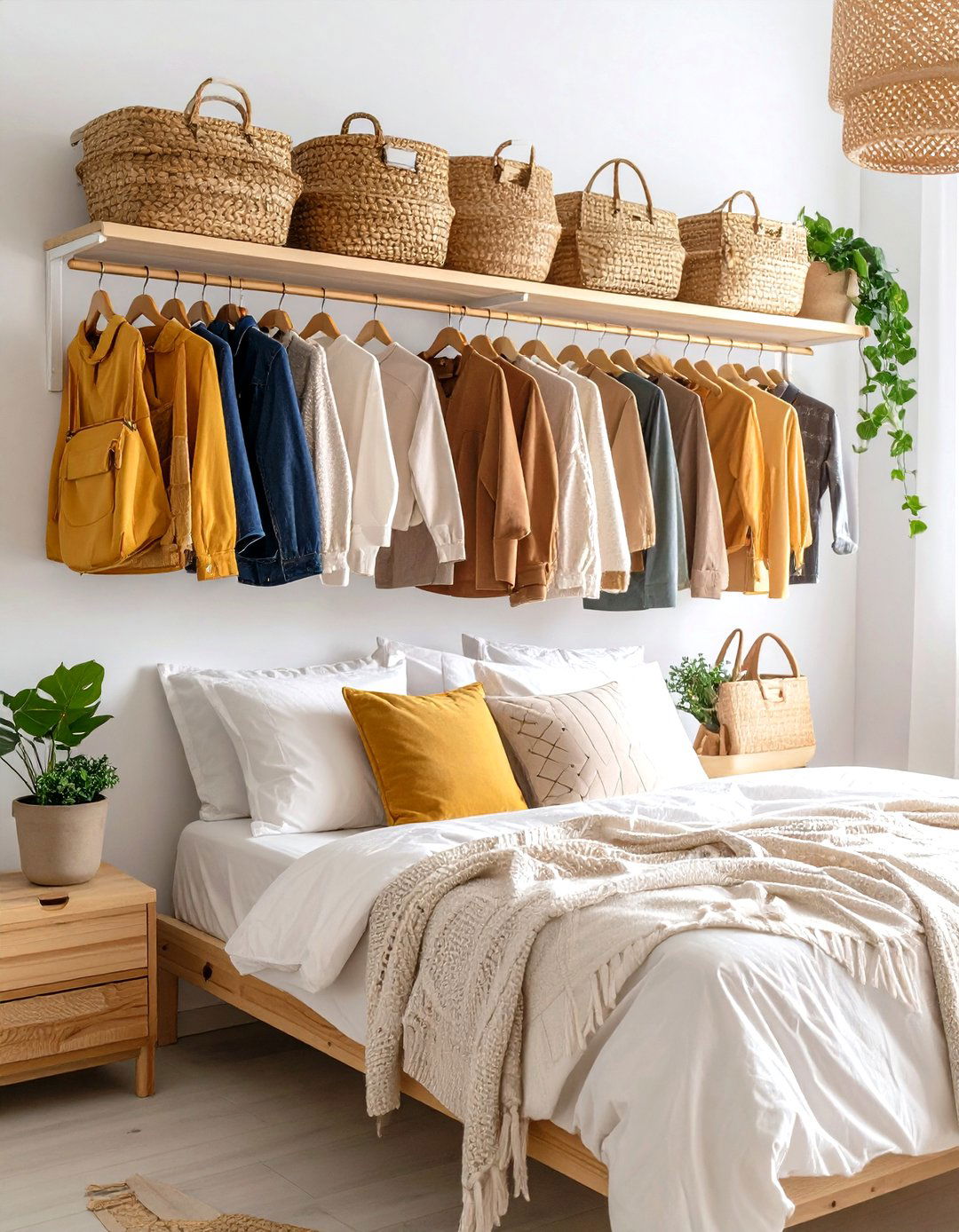
Create unexpected clothes storage space by installing shelves behind your headboard for accessories, bags, and frequently used items. This innovative approach utilizes often-wasted wall space while keeping essentials within arm's reach. Design shelving to accommodate your specific needs—narrow shelves for jewelry and accessories, wider ones for handbags or folded items. Consider lighting these shelves to create both functional storage and ambient bedroom lighting. Ensure adequate depth to prevent items from falling onto your bed during sleep. This clothes storage method works particularly well in master bedrooms where you want to display beautiful accessories or keep next-day outfits easily accessible. Coordinate shelf materials and finishes with your existing bedroom furniture for a cohesive, built-in appearance.
12. Tension Rod Clothes Storage for High Ceilings

Take advantage of high ceilings by installing tension rods from floor to ceiling for maximum vertical clothes storage. This solution works exceptionally well in loft-style apartments or rooms with architectural features that prevent traditional closet installation. Mount tension rods at varying heights to accommodate different garment lengths while maintaining easy access. Choose heavy-duty rods that can support significant weight without slipping. Consider installing multiple parallel rods to create distinct zones for different clothing categories. This clothes storage method provides enormous hanging capacity while maintaining an open, airy feeling in your space. Add coordinating storage baskets or boxes at the base for shoes and accessories to complete your vertical organization system.
13. Clear Container Clothes Storage System
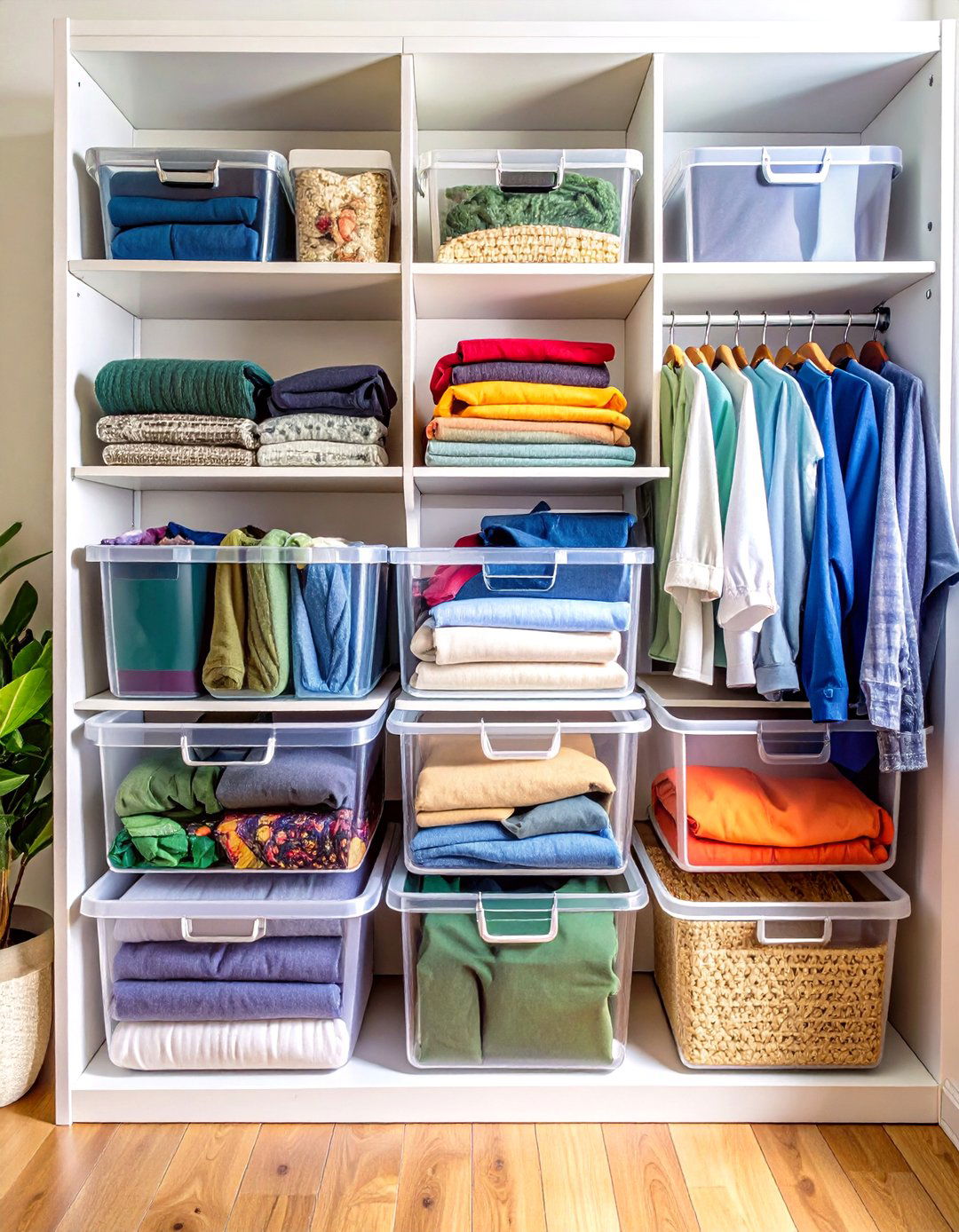
Organize clothes storage using clear, stackable containers that provide visibility while protecting garments from dust and pests. This method works particularly well for seasonal rotation, archival storage, or organizing children's rapidly changing wardrobes. Choose containers with secure, airtight lids and stack them efficiently in closets, under beds, or in storage areas. Label each container clearly with contents and dates for easy rotation. For shoes, use clear stackable boxes to create a boutique-style display while protecting footwear from damage. This clothes storage approach allows quick visual inventory of your wardrobe while maintaining organization during seasonal transitions. Consider uniform container sizes for the most space-efficient stacking and professional appearance throughout your storage areas.
14. Modular Cube Clothes Storage Units

Build flexible clothes storage systems using modular cube organizers that can be reconfigured as needs change. These versatile units work as standalone pieces or can be combined to create custom storage walls. Mix open cubes with fabric bins, hanging rods, and closed storage for maximum organization flexibility. Choose coordinating colors and materials that complement your room's décor while providing ample storage capacity. This modular approach allows you to start small and expand your clothes storage system over time. Rearrange cubes seasonally or as your wardrobe changes, making this investment adaptable to evolving needs. Consider incorporating both horizontal and vertical configurations to accommodate different spaces throughout your home while maintaining a cohesive organizational aesthetic.
15. Ladder-Style Clothes Storage Rack

Repurpose wooden ladders or purchase ladder-style racks for unique clothes storage that doubles as rustic décor. This trendy storage solution works particularly well in farmhouse, industrial, or bohemian-style bedrooms. Use ladder rungs for hanging accessories, scarves, or jewelry while leaning larger items against the frame. Choose sturdy ladders that can support clothing weight without tipping. Sand and refinish vintage ladders to match your décor, or select new ladder-style racks in coordinating finishes. This clothes storage method adds character to your space while providing functional organization for frequently used items. Position ladders strategically to avoid high-traffic areas while maintaining easy access to stored items. Consider multiple smaller ladders for different zones rather than one large piece.
16. Trunk-Based Clothes Storage Solution

Incorporate vintage trunks or modern storage chests for clothes storage that provides both organization and additional seating. This classic approach works excellently for storing seasonal items, extra bedding, or special occasion clothing. Position trunks at the foot of beds, in walk-in closets, or as coffee tables for multi-functional space utilization. Choose trunks with cedar lining for natural moth protection, or add sachets and moisture absorbers to maintain fabric freshness. This clothes storage method particularly suits vintage or traditional décor styles while providing generous capacity for bulky items. Consider multiple smaller trunks rather than one large piece for easier handling and more flexible placement throughout your home. Label contents for quick identification during seasonal wardrobe transitions.
17. Wall-Mounted Clothes Storage Hooks
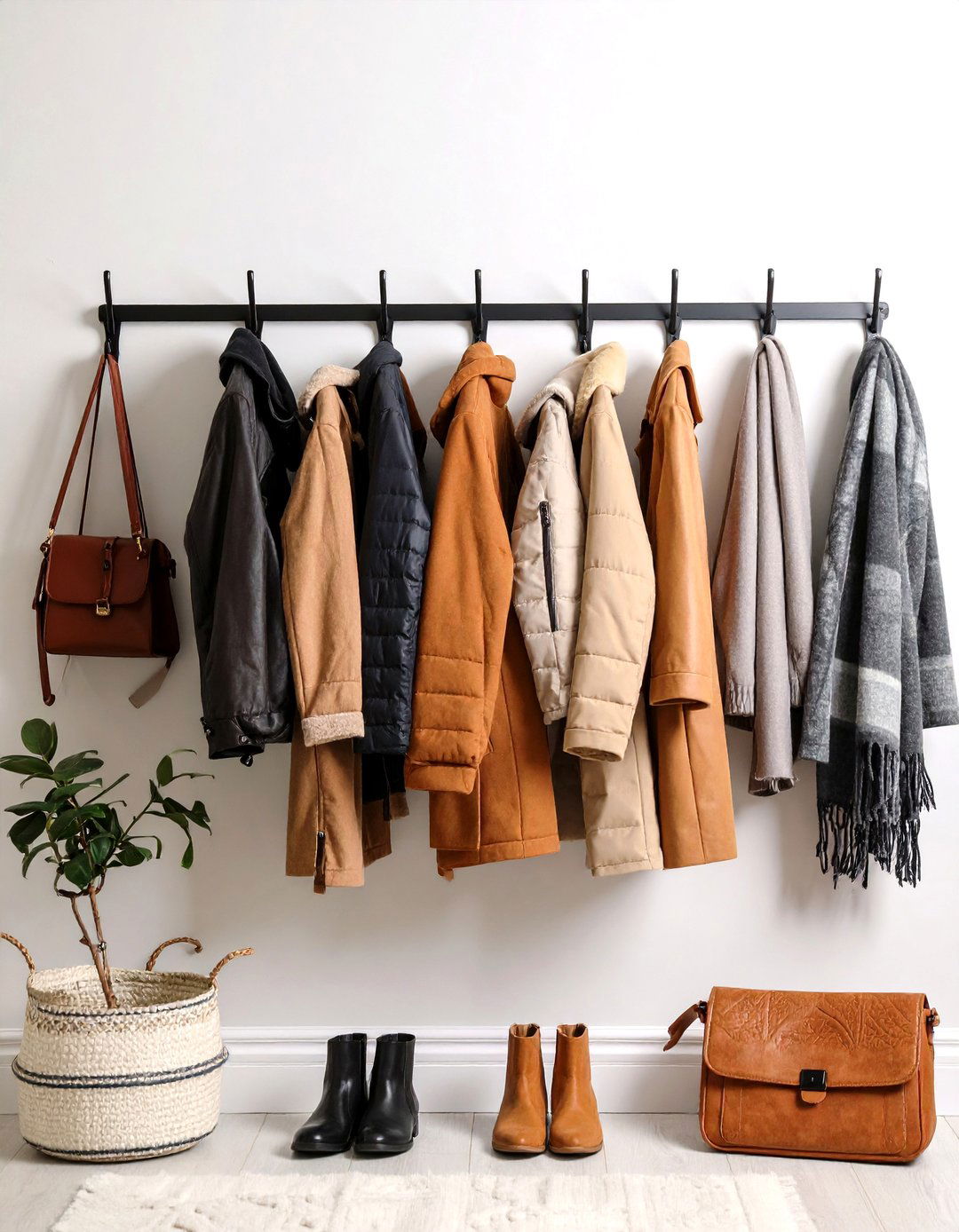
Install decorative wall hooks for immediate clothes storage of frequently used items like jackets, scarves, and bags. This simple solution works particularly well in entryways, bedrooms, or walk-in closets where quick access is essential. Arrange hooks at varying heights to accommodate family members of different sizes while preventing clothing from overlapping. Choose hooks that complement your room's hardware finishes—brushed nickel, oil-rubbed bronze, or antique brass. This clothes storage method keeps daily essentials organized while preventing the common habit of draping clothes over chairs or door handles. Install hooks with adequate spacing to prevent overcrowding and ensure each item hangs properly without wrinkling. Consider both individual hooks and multi-hook strips for different storage needs.
18. Bookcase Clothes Storage Conversion
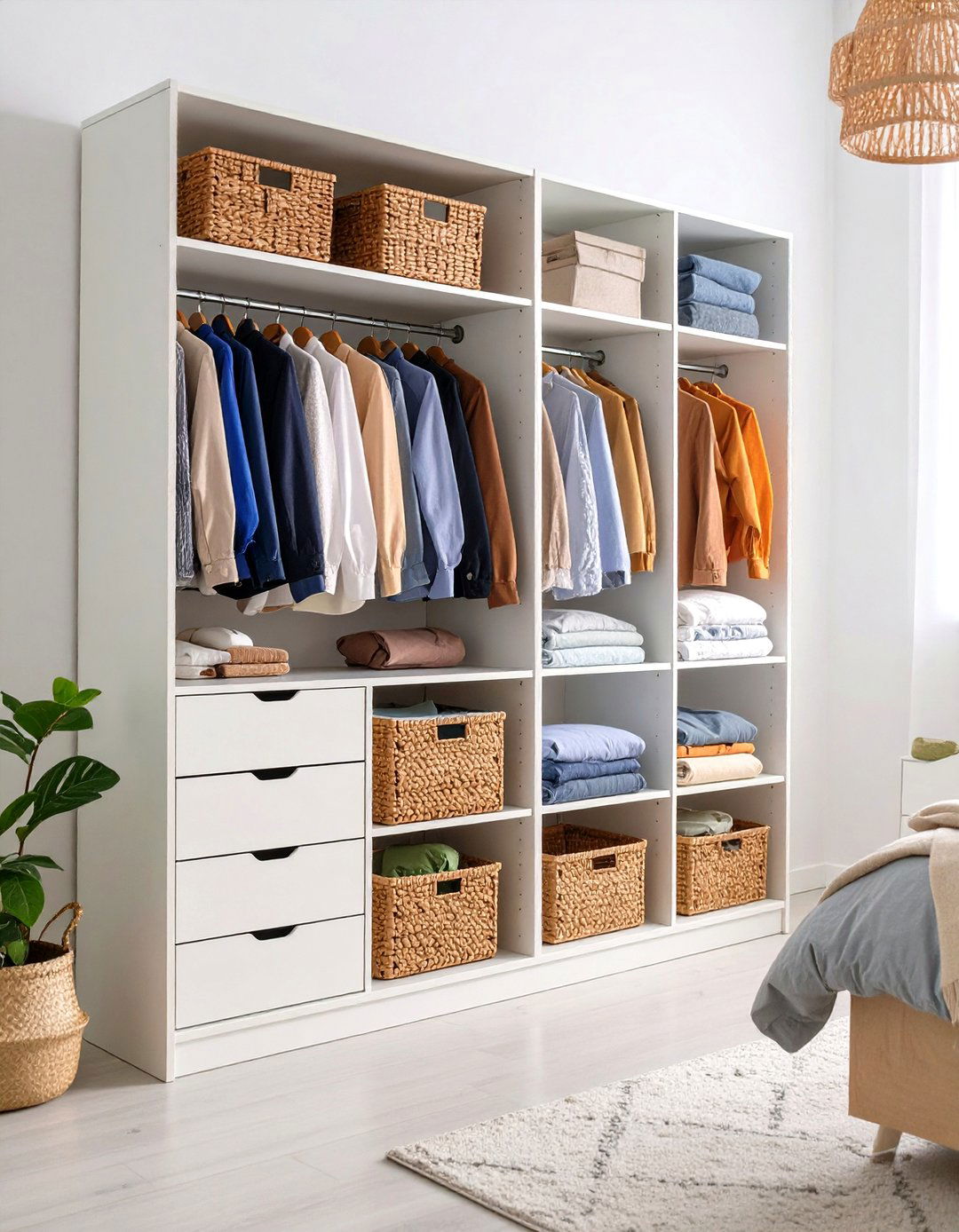
Transform bookcases into comprehensive clothes storage systems by adding hanging rods, baskets, and shelf dividers. This budget-friendly approach works particularly well for rooms without built-in closets or when additional storage is needed. Install adjustable hanging rods under shelves for shirts and jackets while using cubbies for folded items and accessories. Choose bookcases with adjustable shelving to accommodate different garment heights and storage containers. This clothes storage method provides enormous flexibility in organization while utilizing existing furniture pieces. Add fabric bins or baskets to conceal smaller items while maintaining easy access. Consider coordinating multiple bookcases for walk-in closet alternatives or using single units in bedrooms for supplemental storage that doubles as attractive furniture.
19. Garment Bag Clothes Storage for Delicate Items
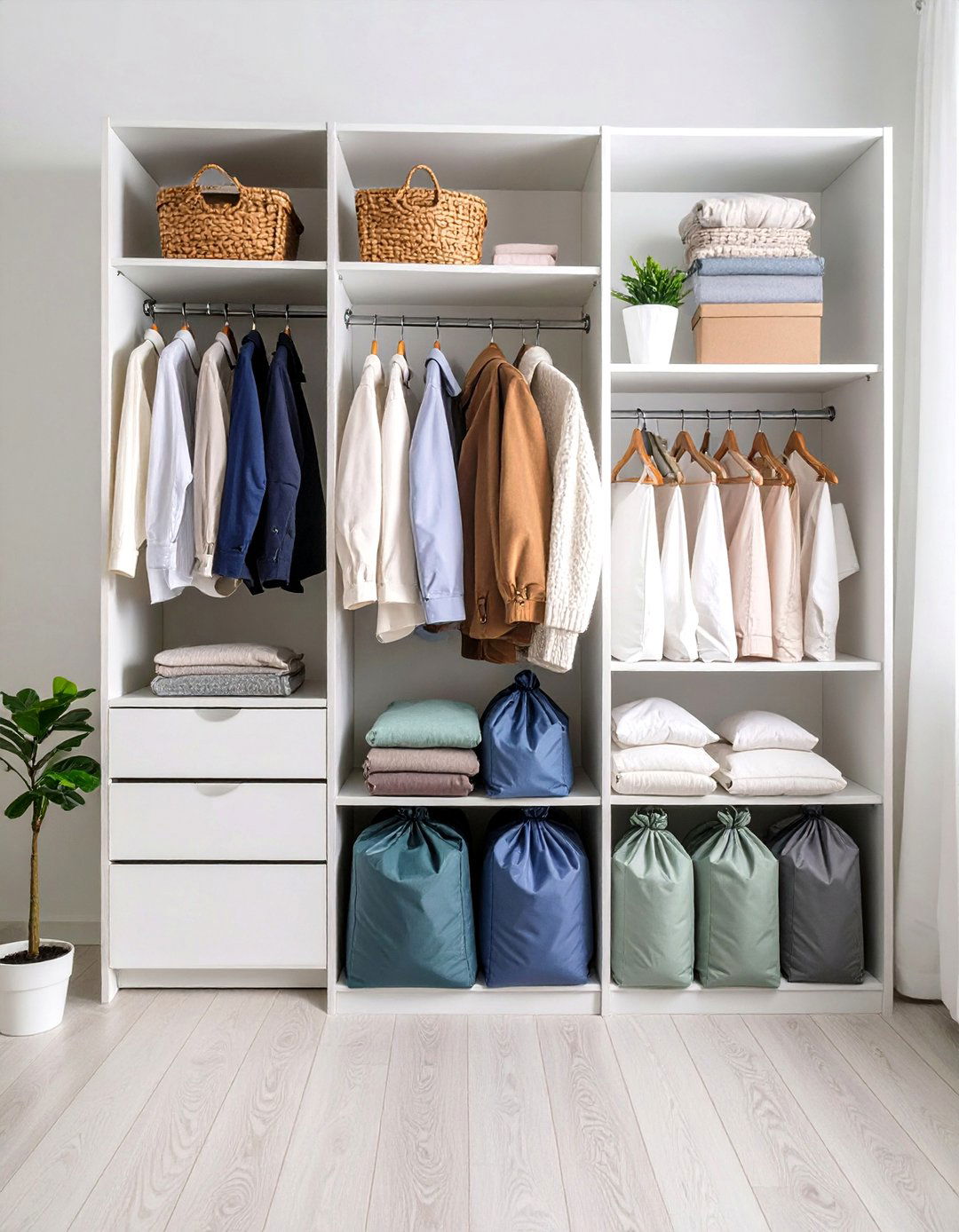
Protect valuable or delicate clothing using breathable garment bags instead of plastic covers for proper clothes storage. This method works exceptionally well for formal wear, seasonal coats, or special occasion garments that require extra protection. Choose fabric garment bags that allow air circulation while preventing dust accumulation and insect damage. Avoid plastic dry-cleaning bags for long-term storage as they can trap moisture and cause yellowing. This clothes storage approach maintains garment shape while providing professional-level protection for investment pieces. Consider cedar-lined garment bags for natural moth repelling properties, or add lavender sachets for pleasant fragrance. Store garment bags in climate-controlled areas and check contents periodically to ensure continued protection and freshness.
20. Double-Duty Furniture Clothes Storage Design
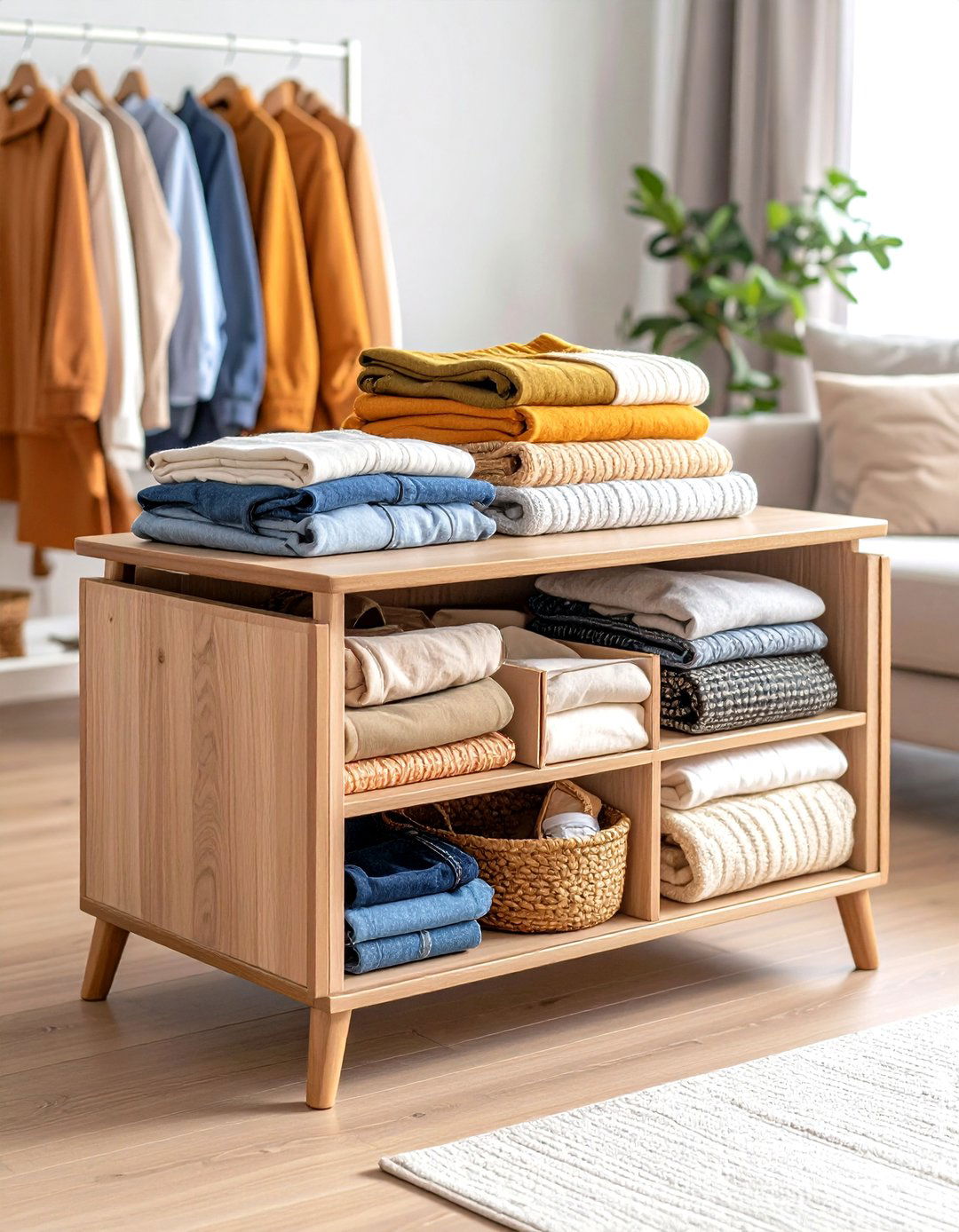
Maximize small spaces with furniture pieces that provide hidden clothes storage while serving primary functions. Examples include headboards with built-in compartments, coffee tables with storage drawers, and room dividers with clothing pockets. This approach works particularly well in studio apartments or multipurpose rooms where space efficiency is crucial. Choose pieces that blend seamlessly with your décor while providing substantial storage capacity for clothing and accessories. Consider custom furniture solutions that address your specific storage needs while maintaining your room's aesthetic appeal. This clothes storage method eliminates the need for additional organizers while keeping frequently used items easily accessible. Look for quality construction that can withstand regular use while protecting stored garments from damage.
Conclusion:
Effective clothes storage transforms both your daily routine and living space, regardless of size limitations or built-in closet availability. These twenty solutions offer practical approaches for every budget and living situation, from simple hooks and dividers to comprehensive organizational systems. The key to successful clothes storage lies in assessing your specific needs, available space, and lifestyle patterns before implementing any solution. Remember that the best storage system is one you'll consistently maintain, so choose approaches that align with your organizational style and daily habits for long-term success.



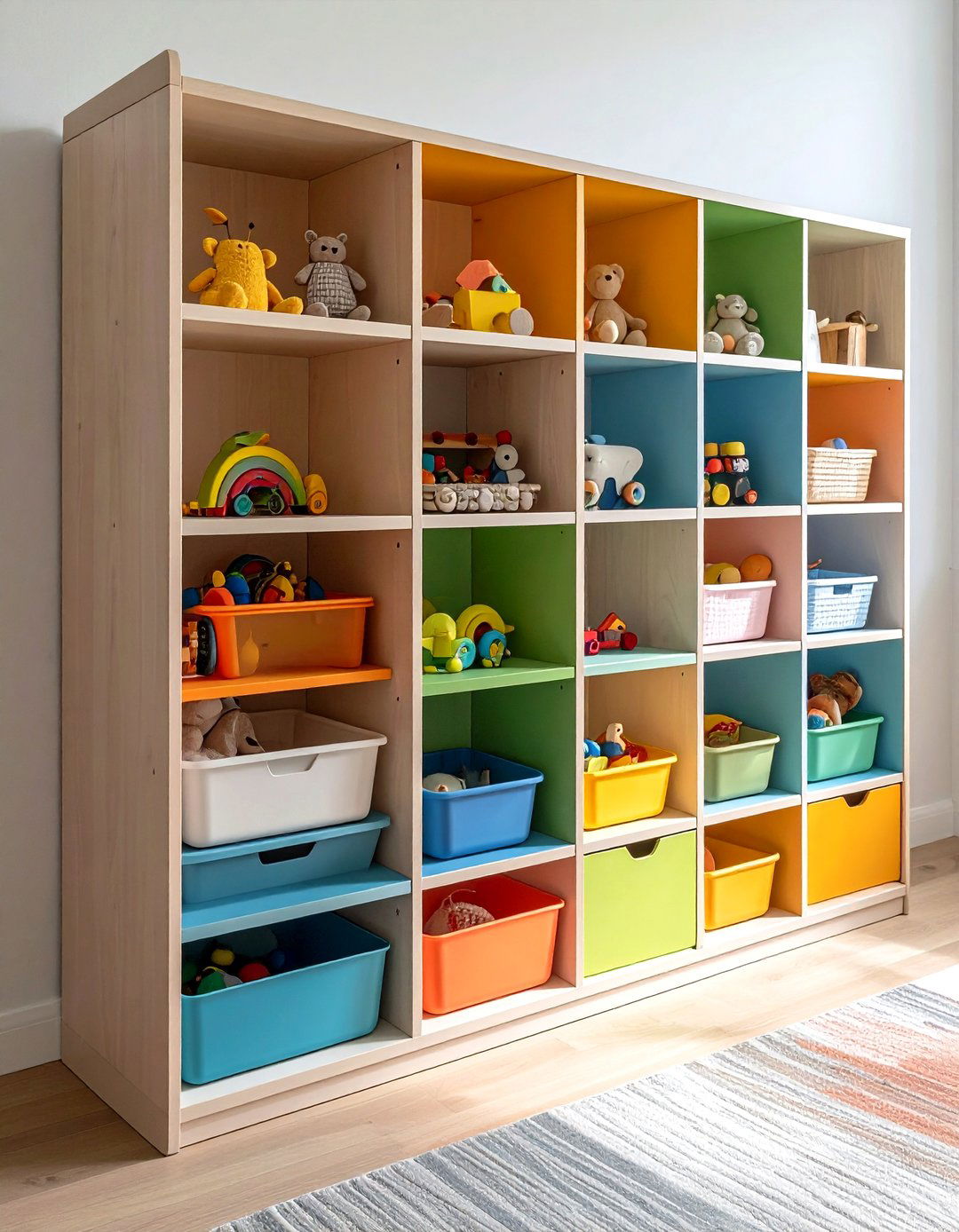
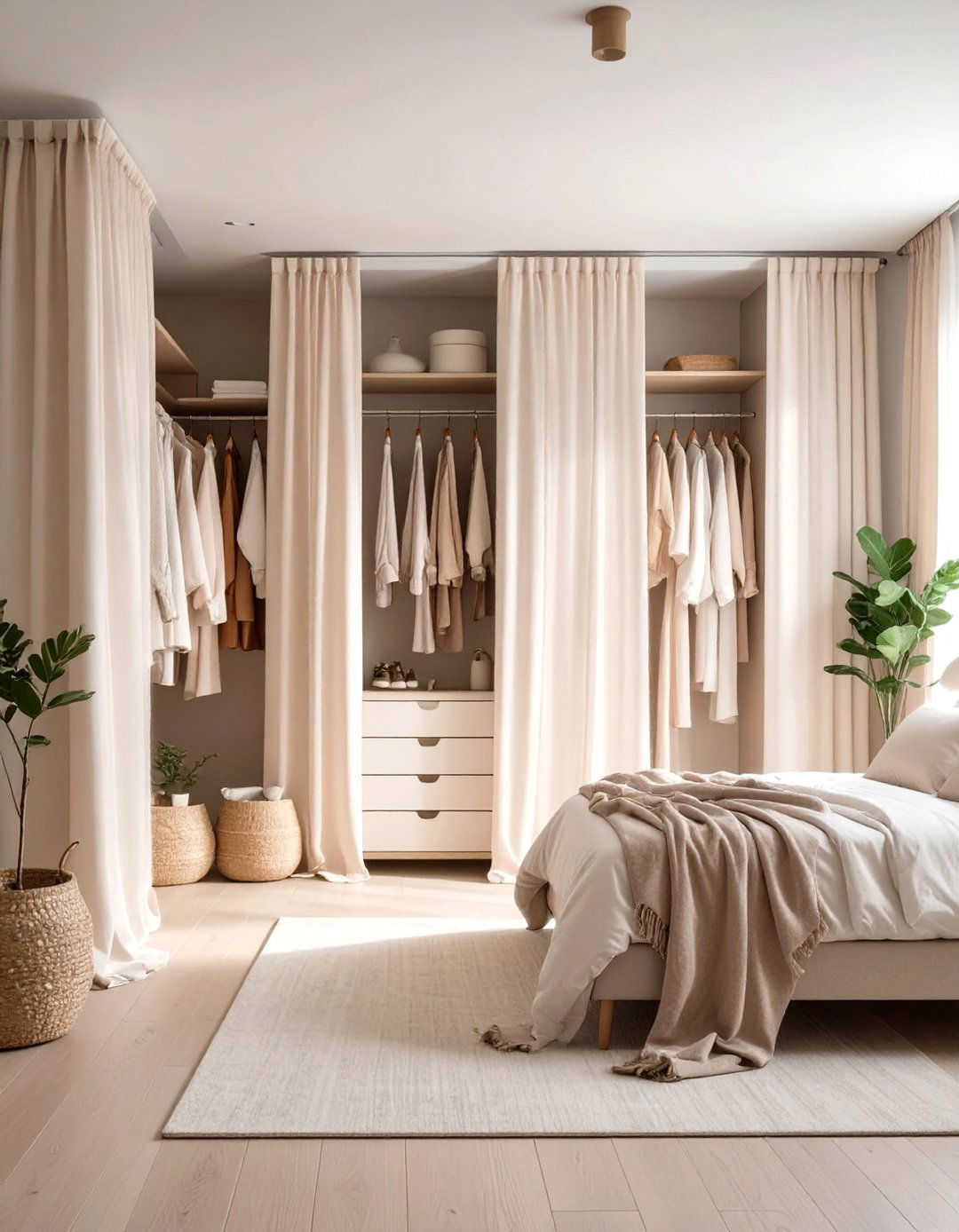

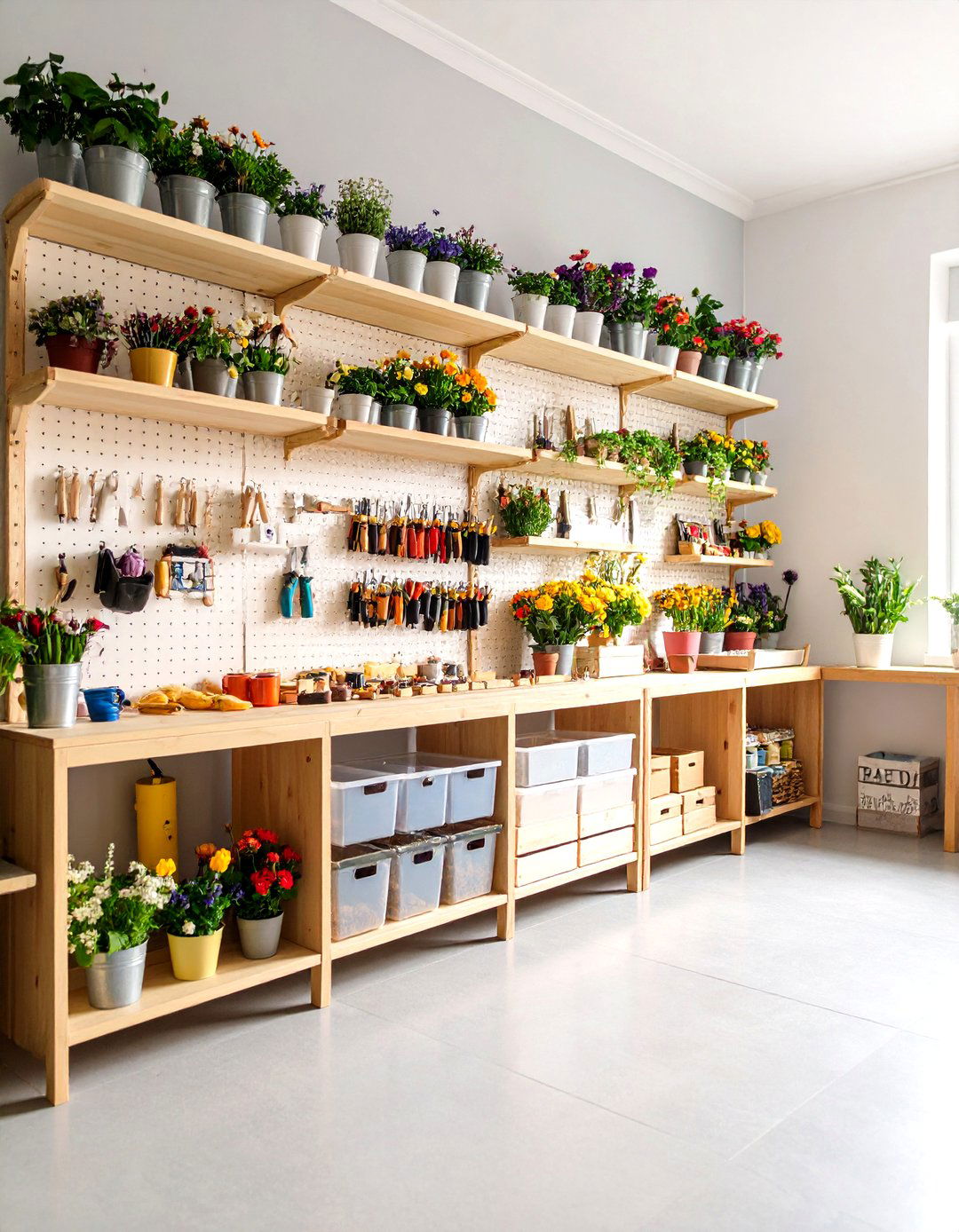
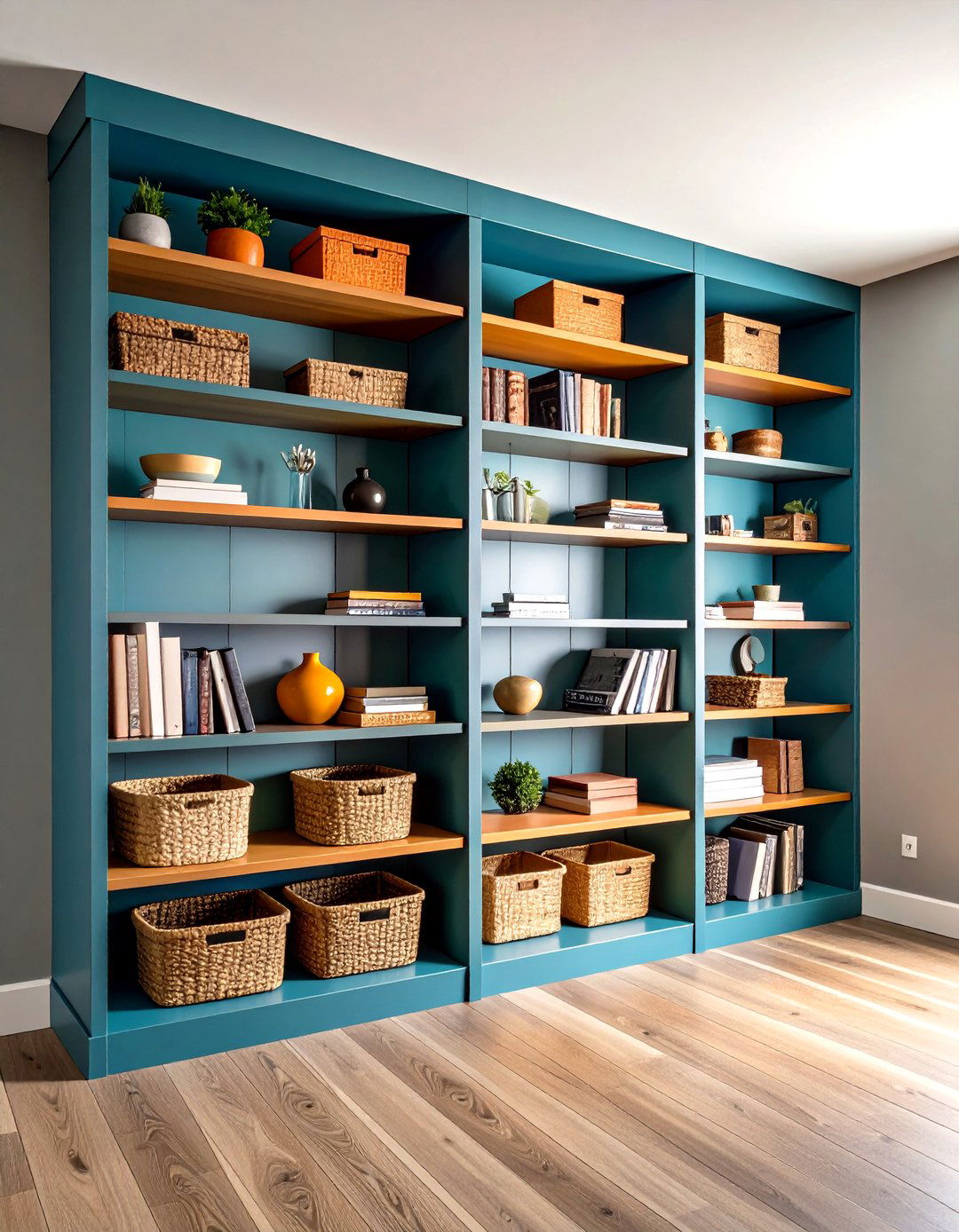
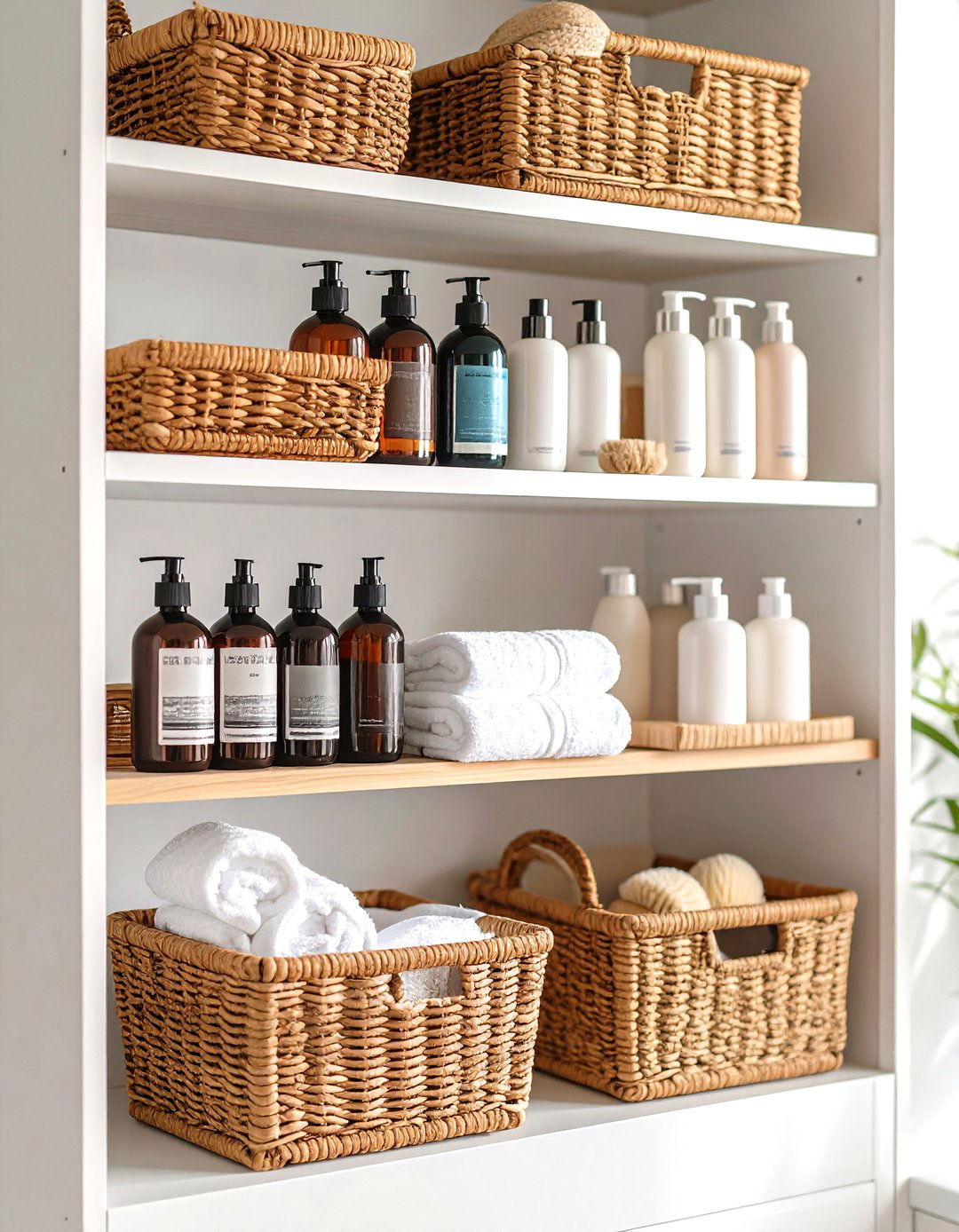
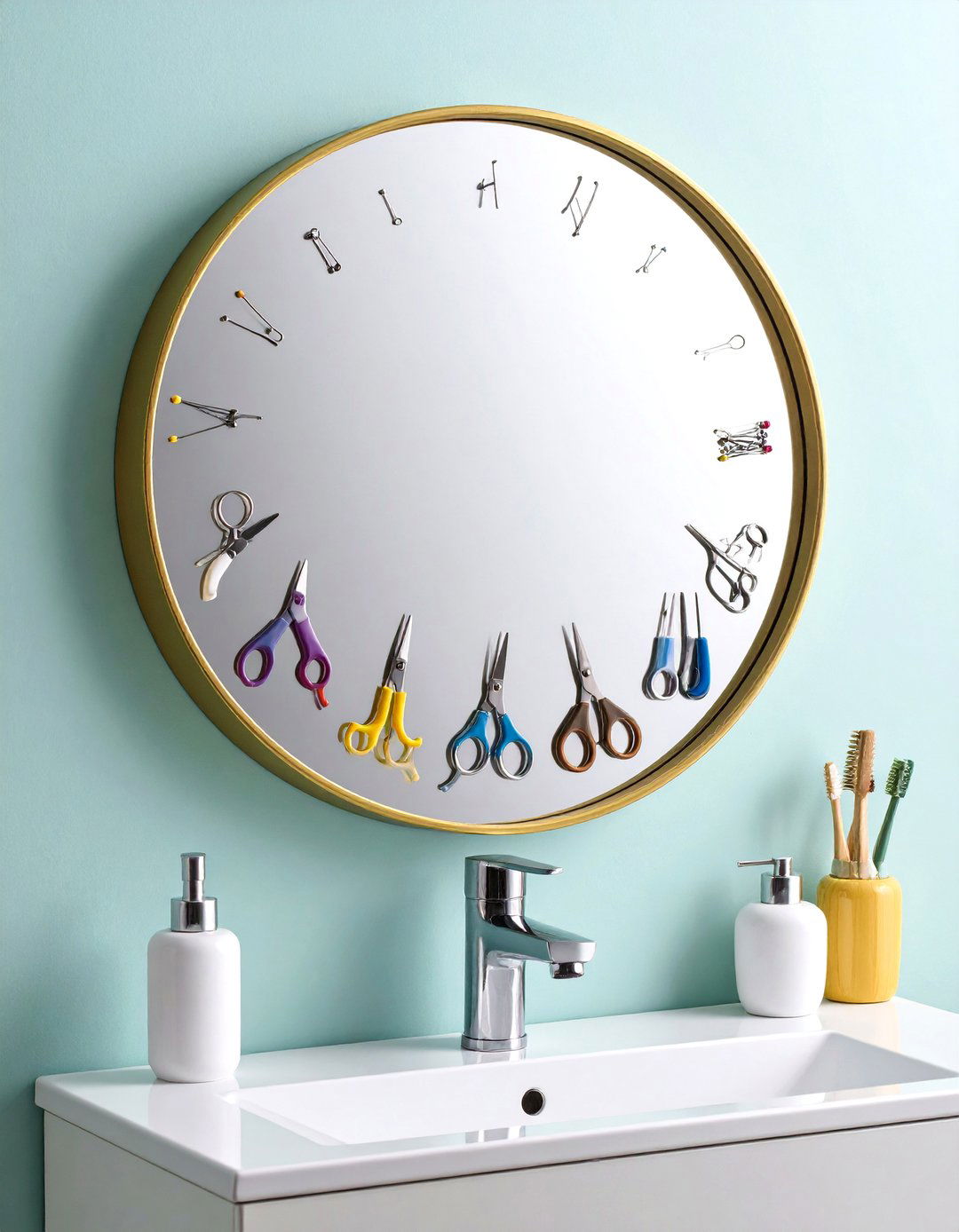
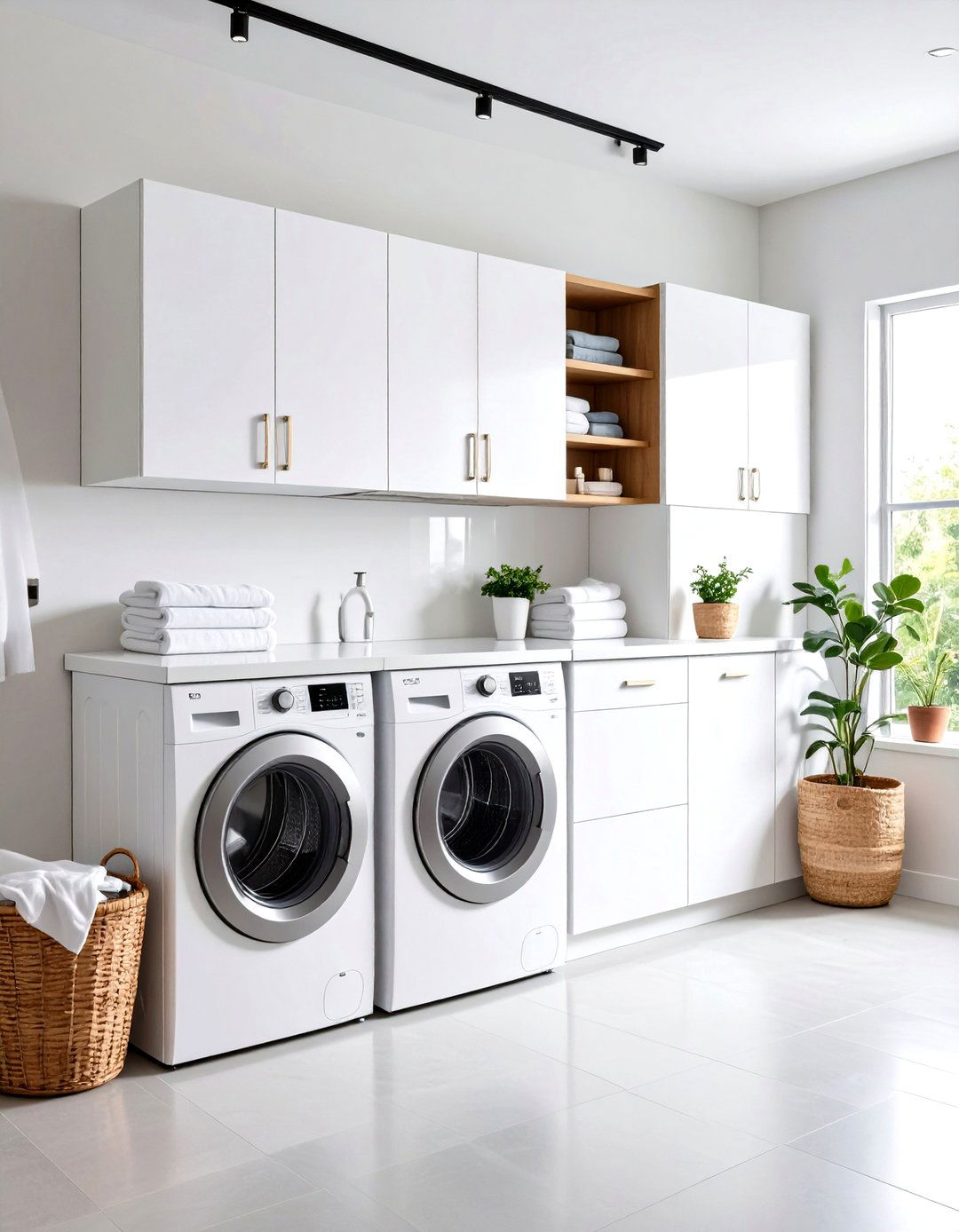
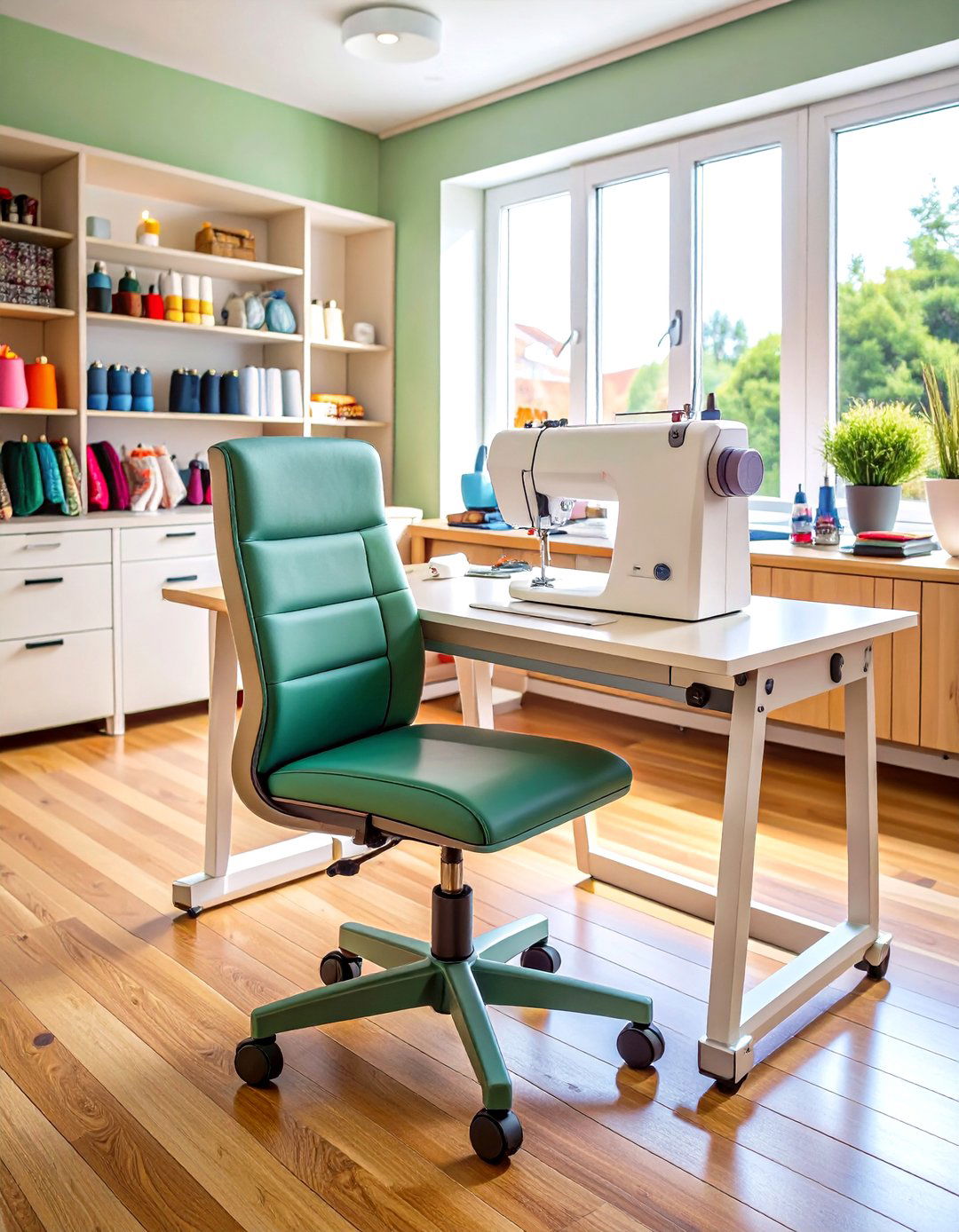
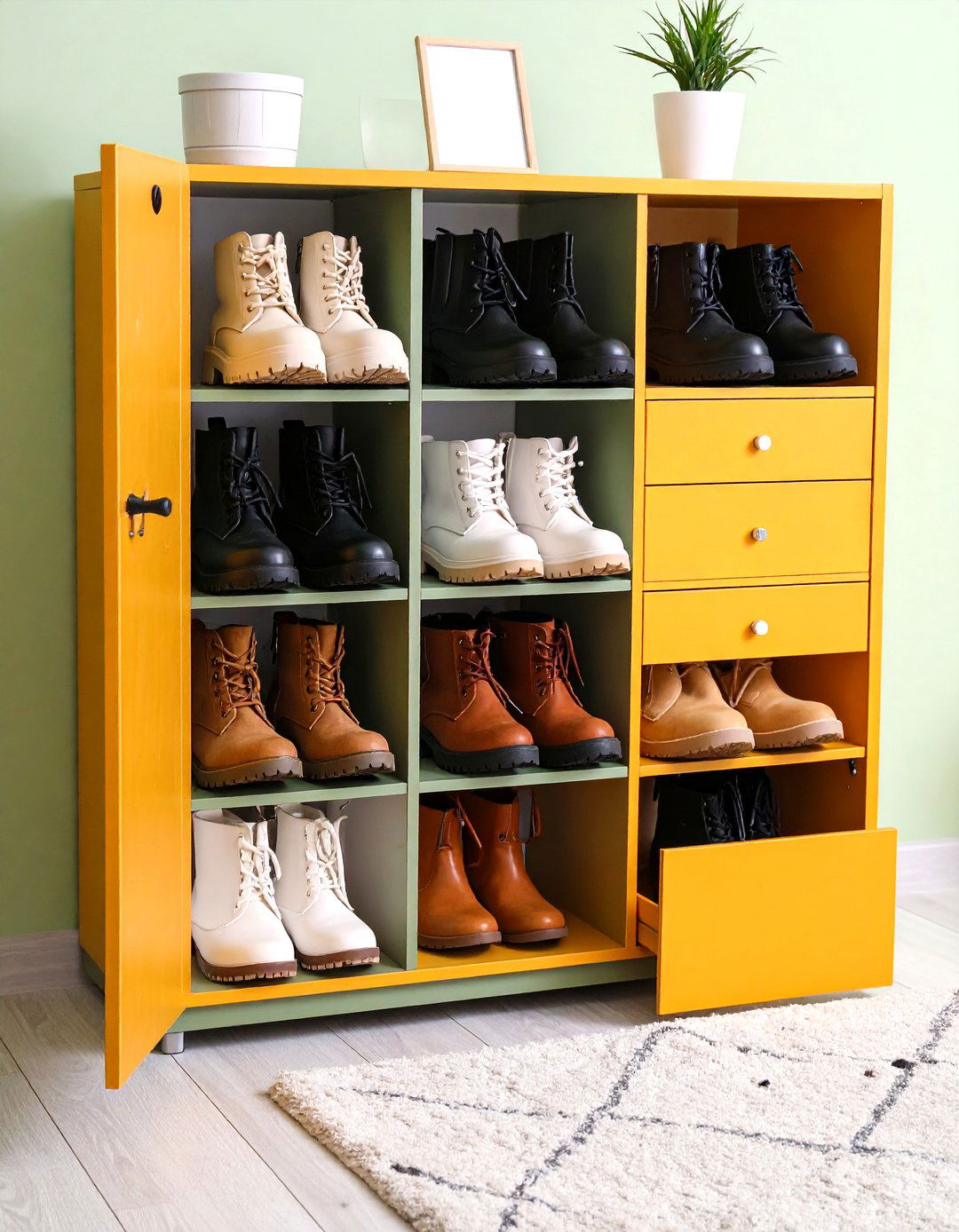
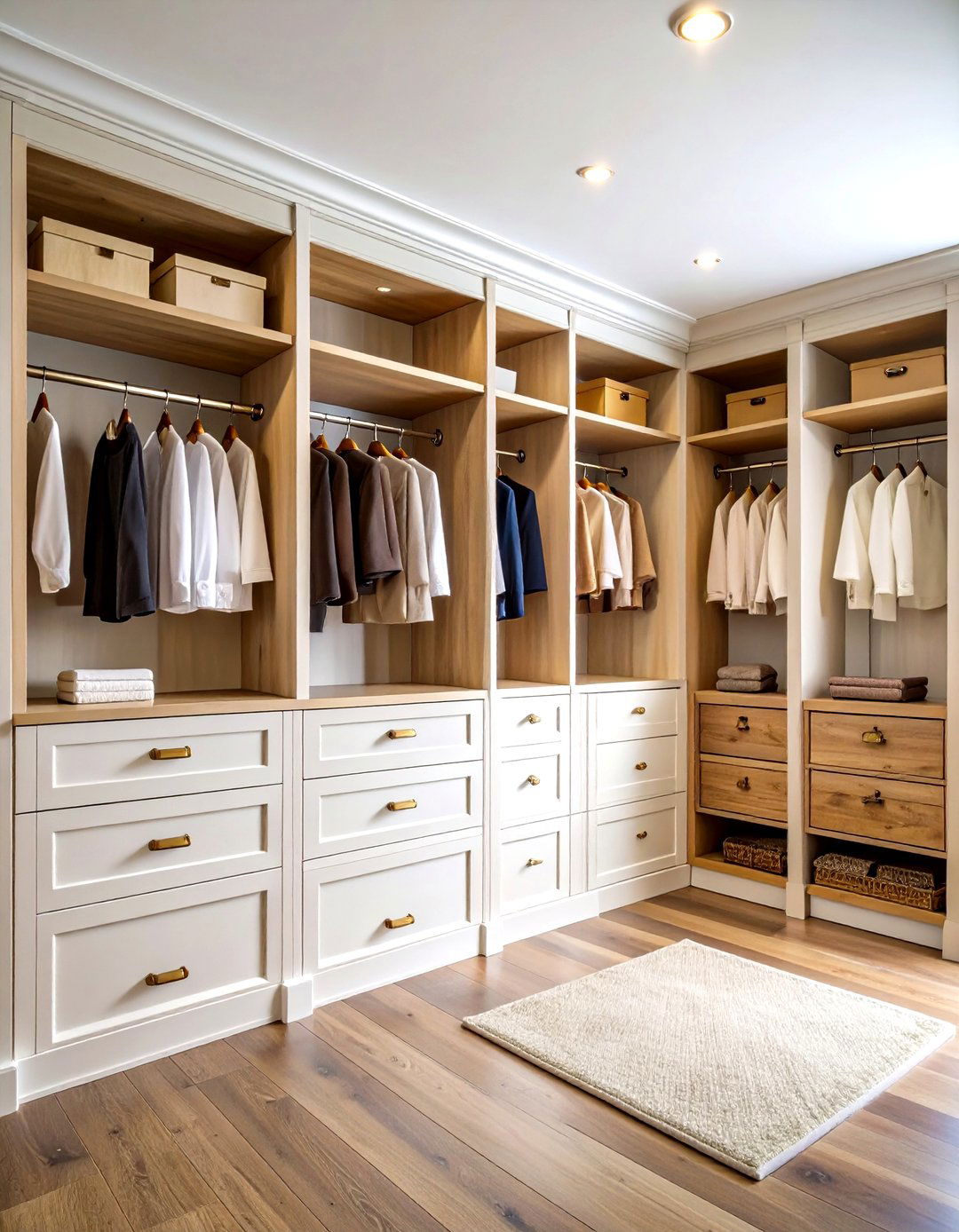
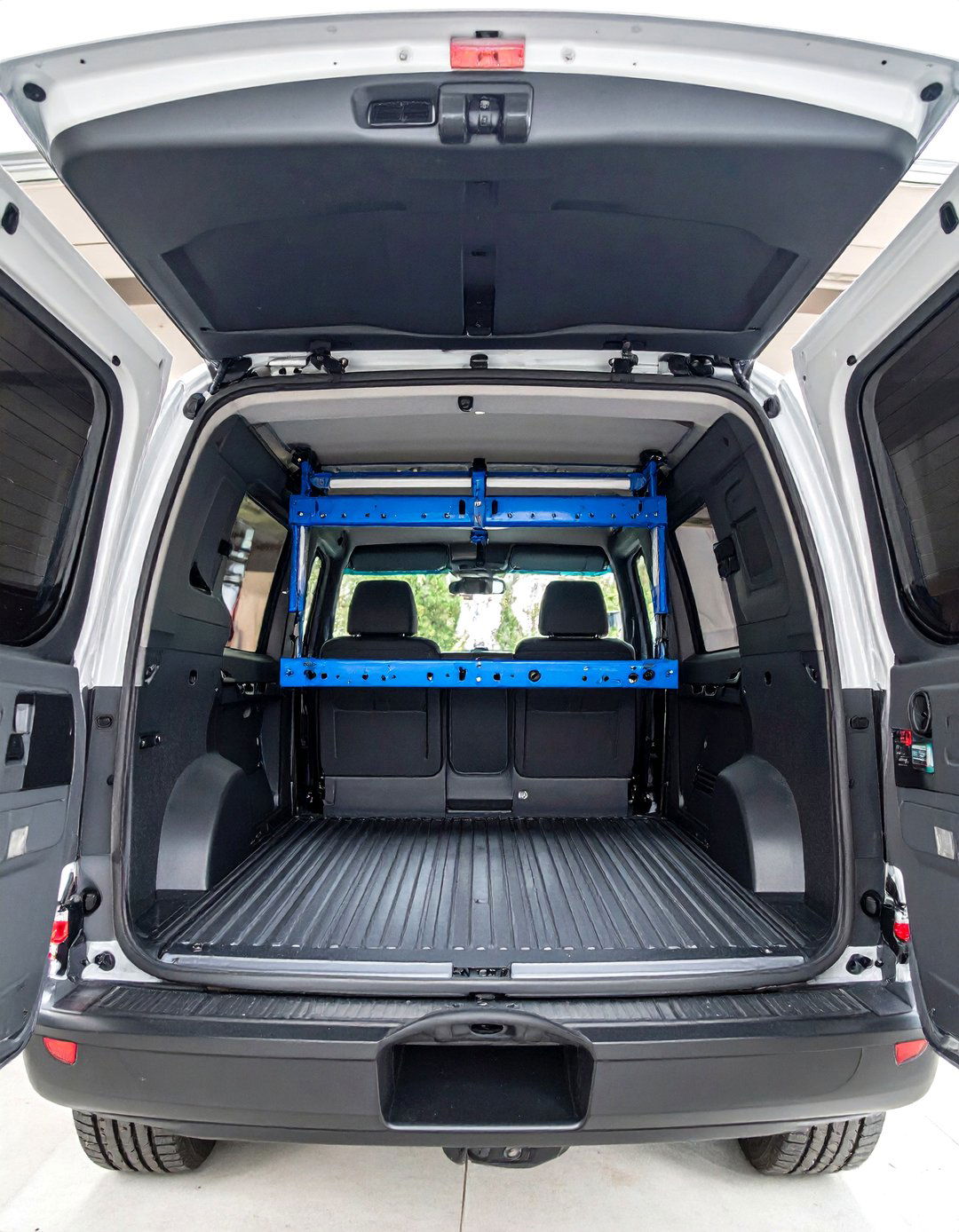
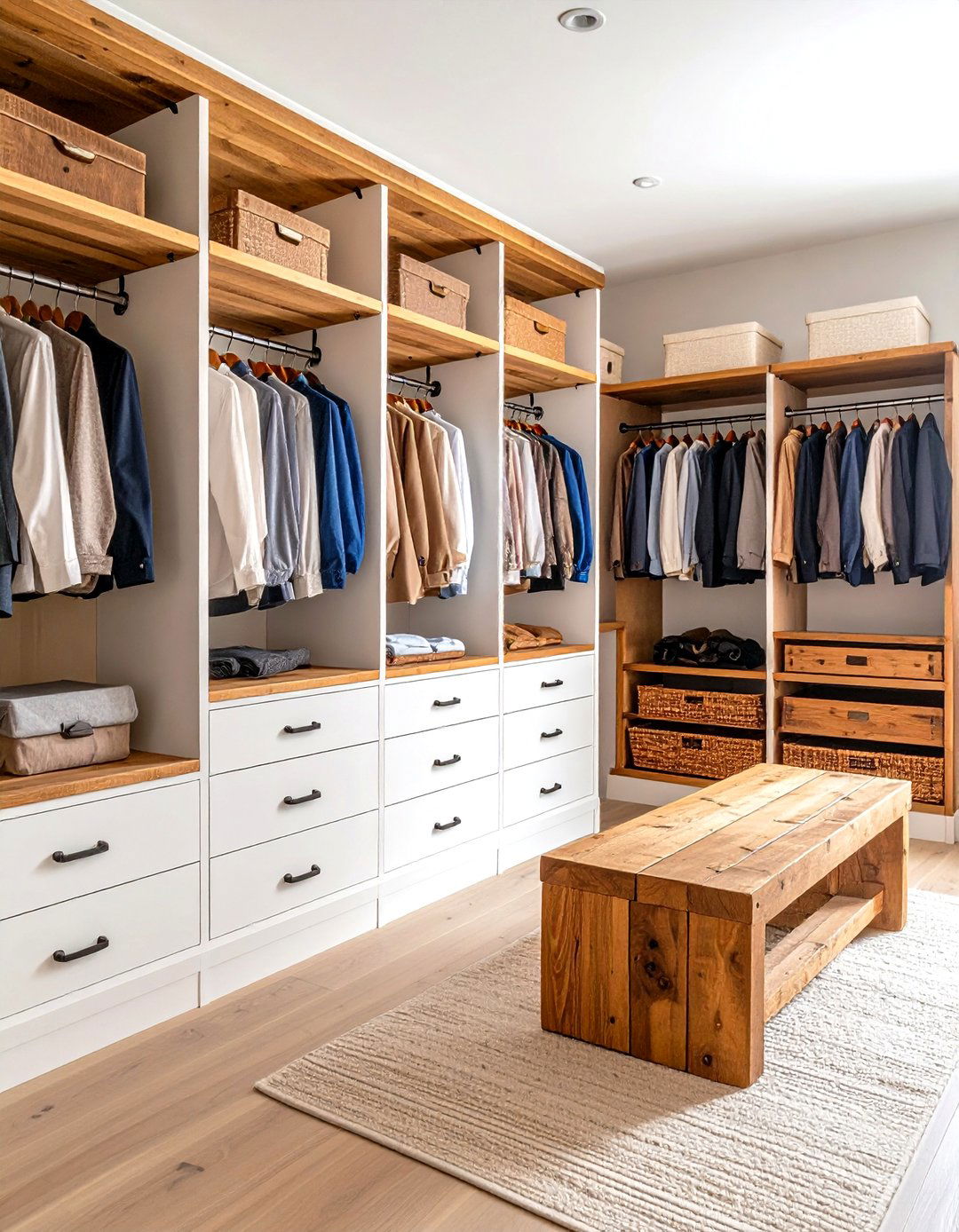
Leave a Reply